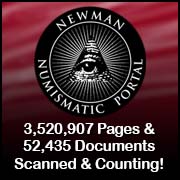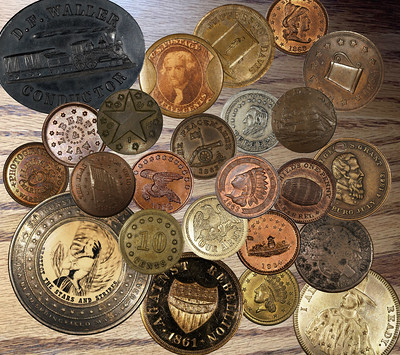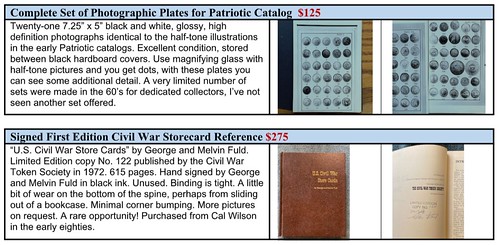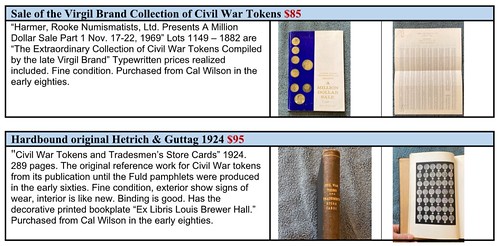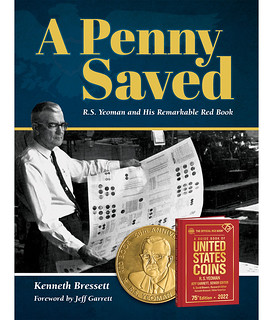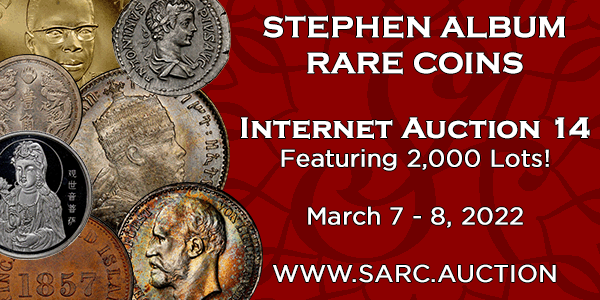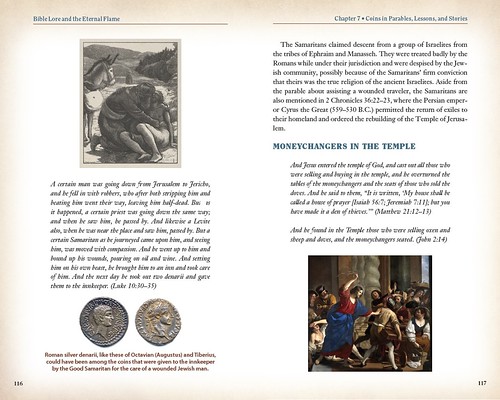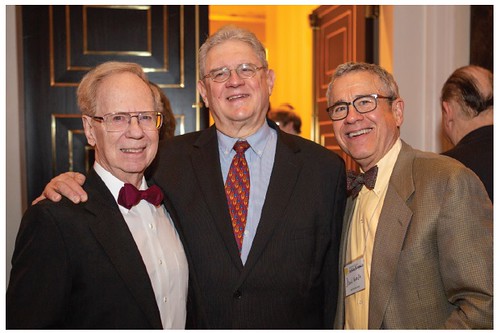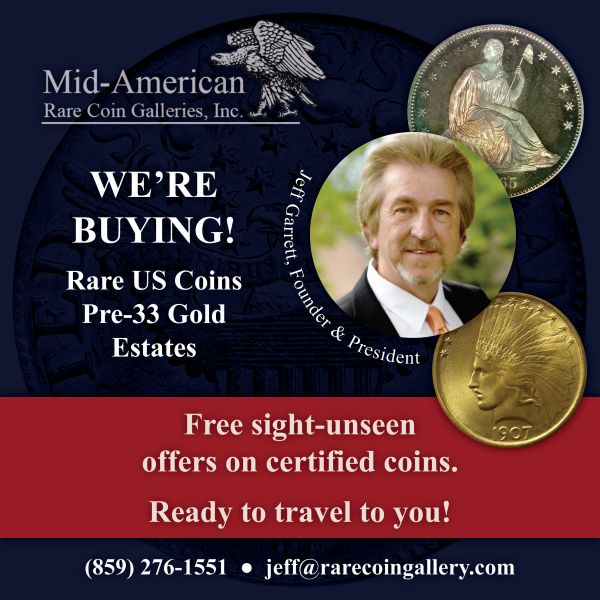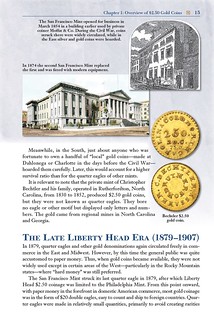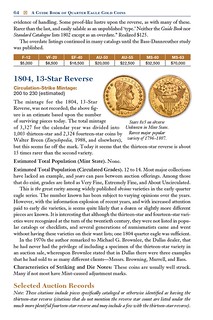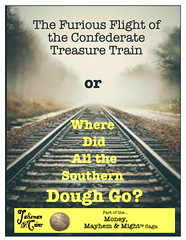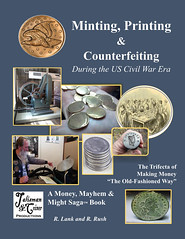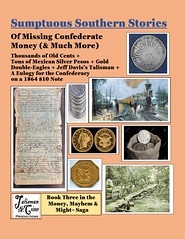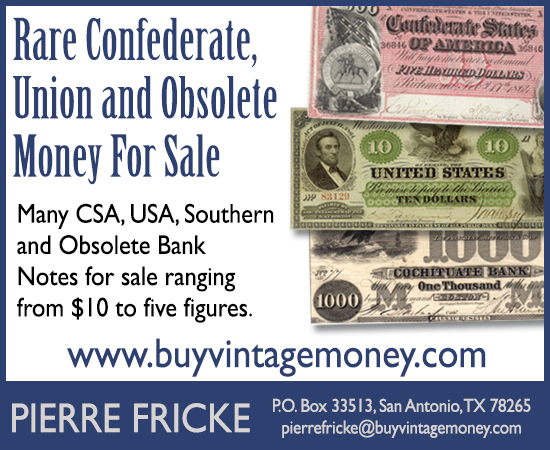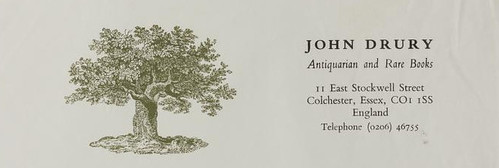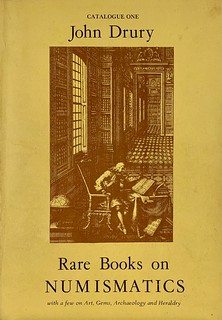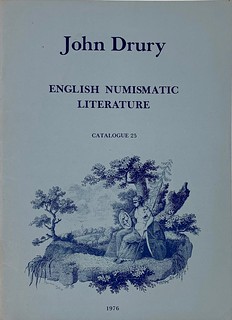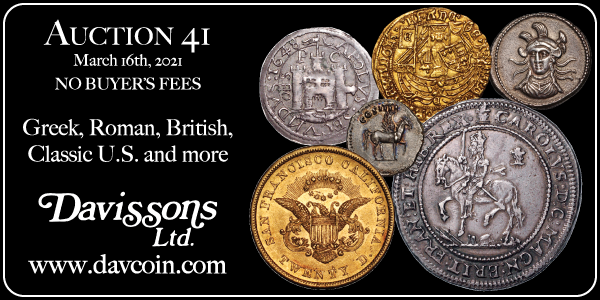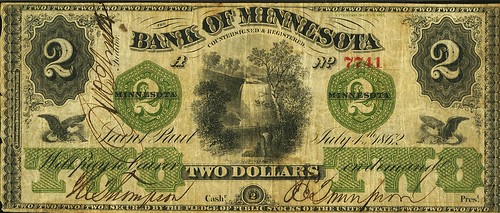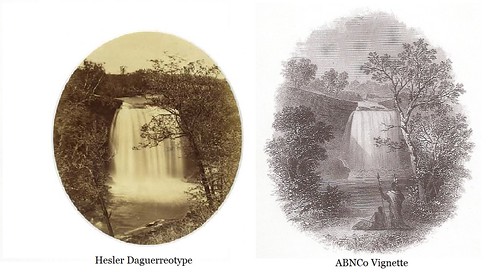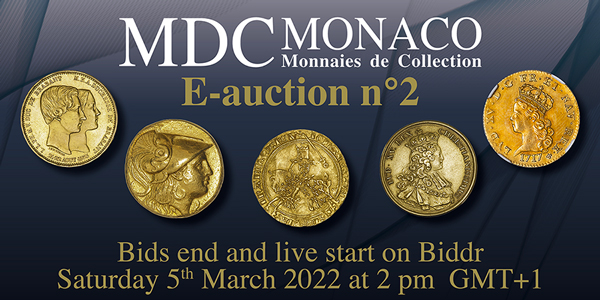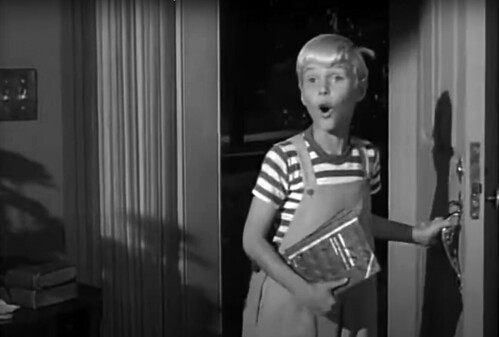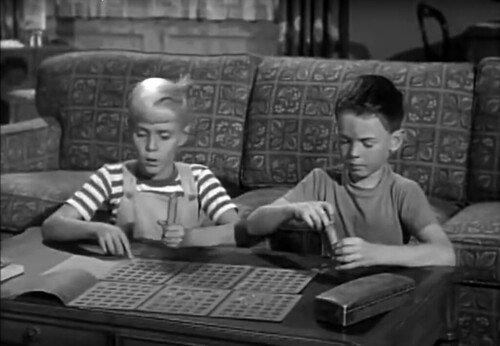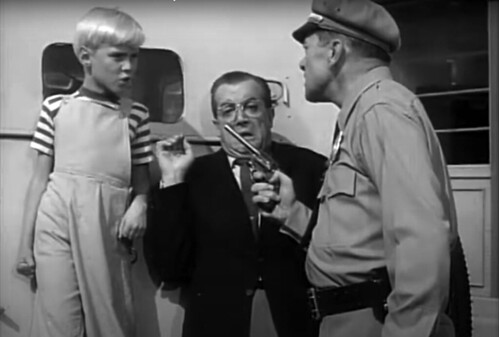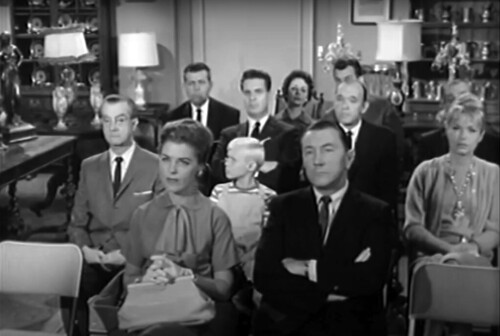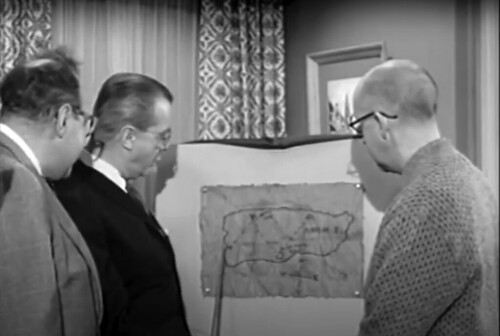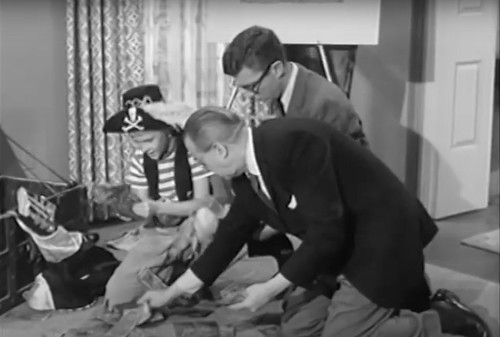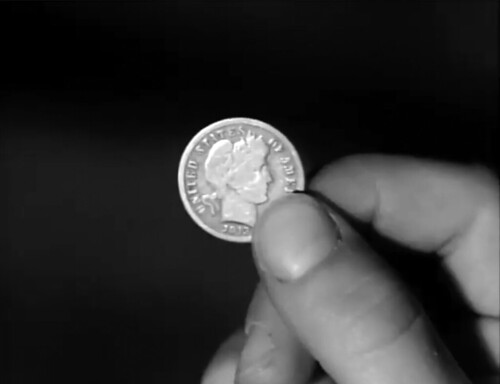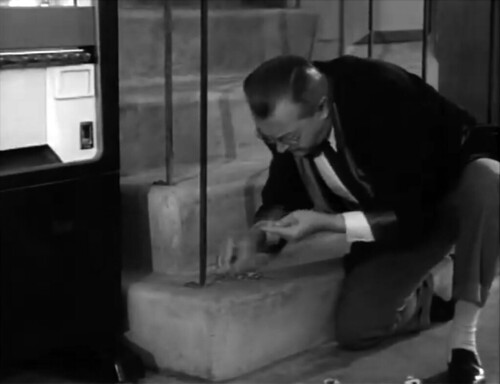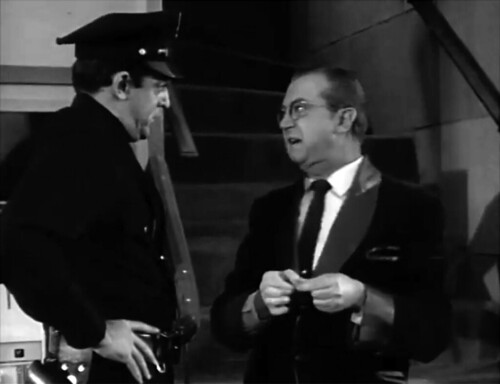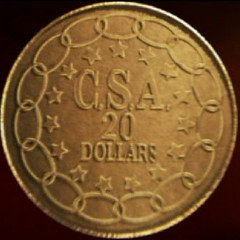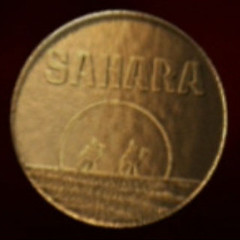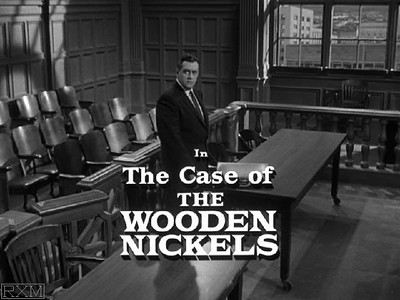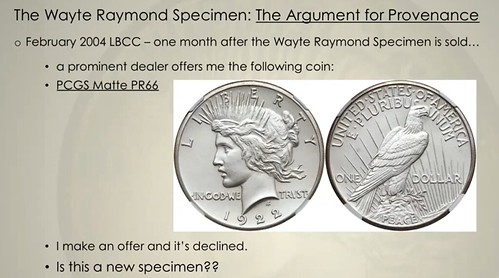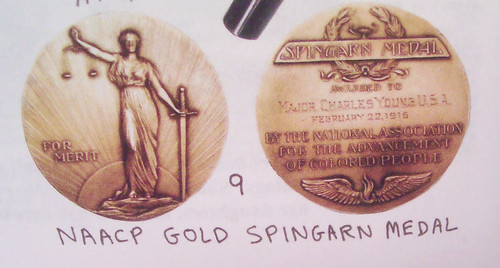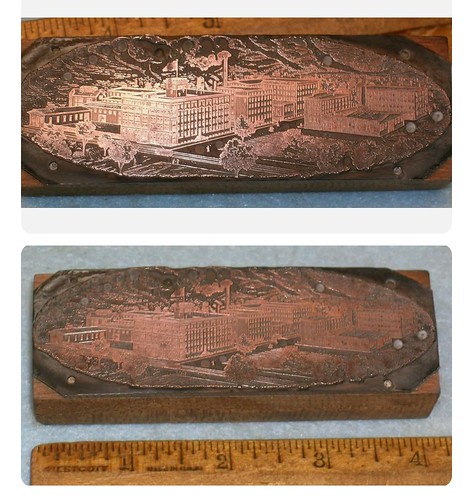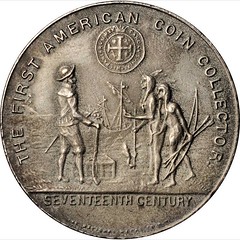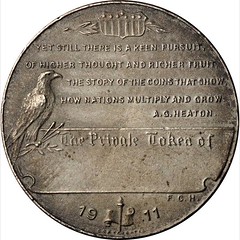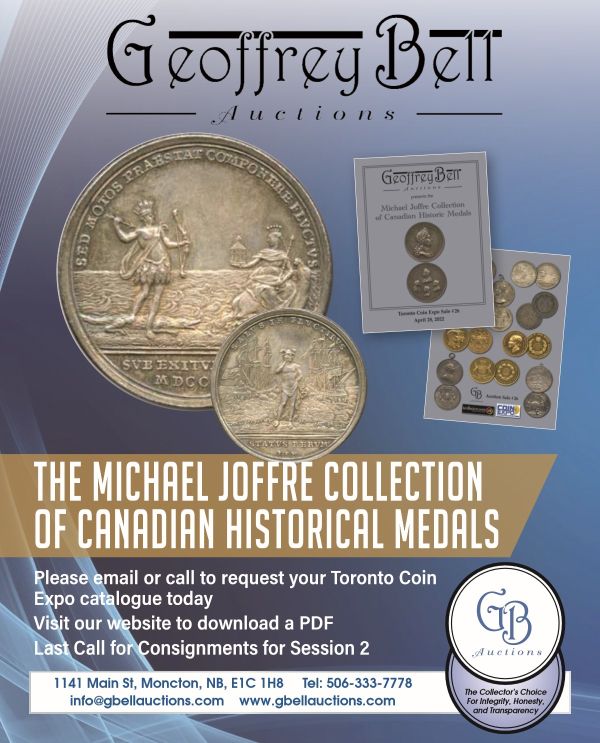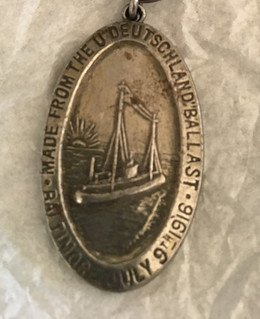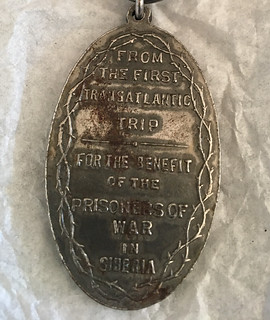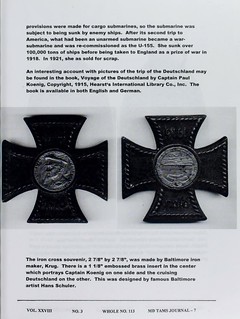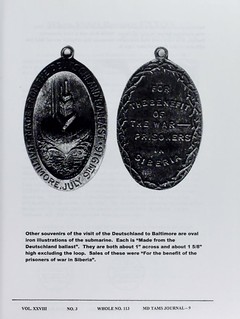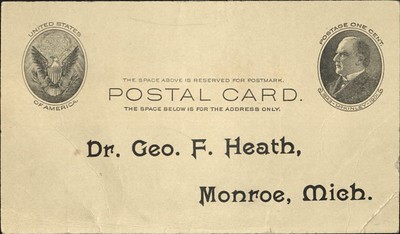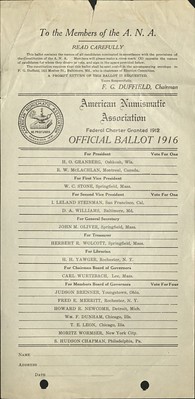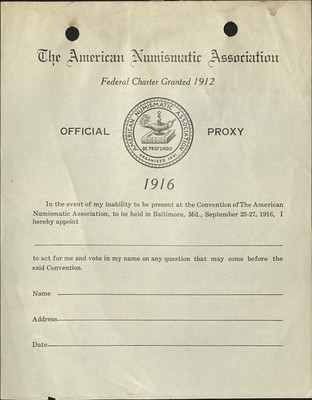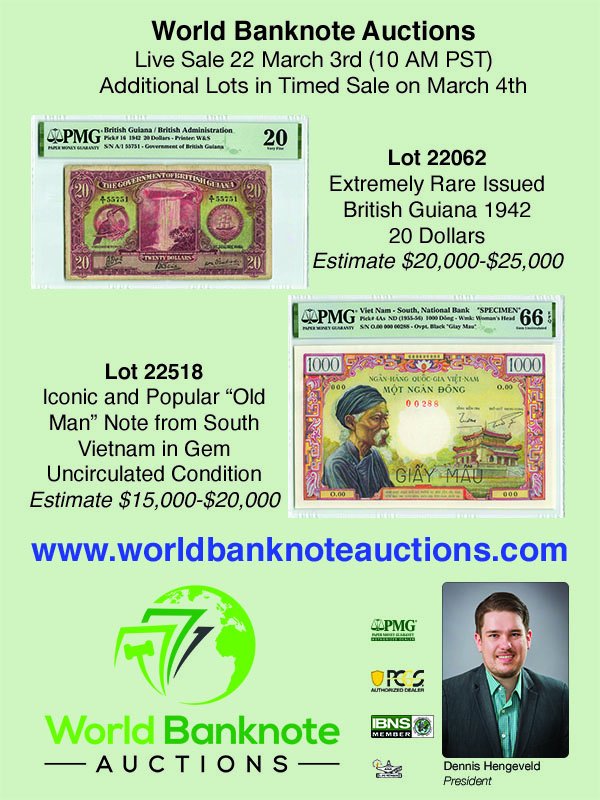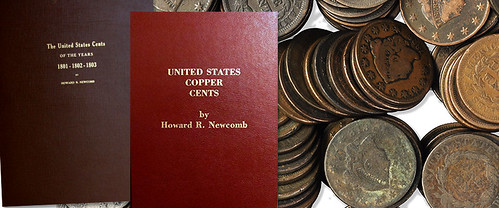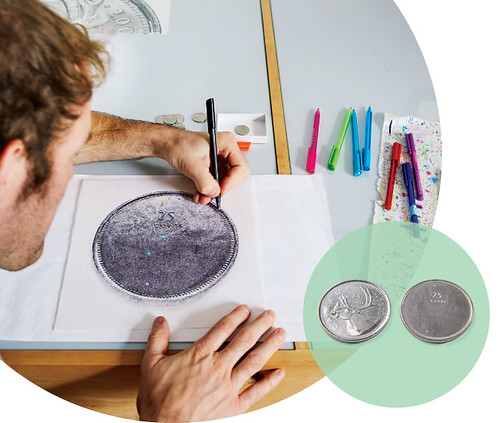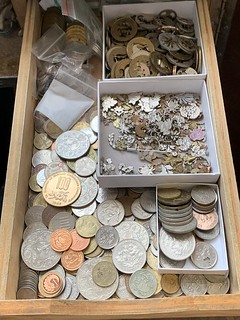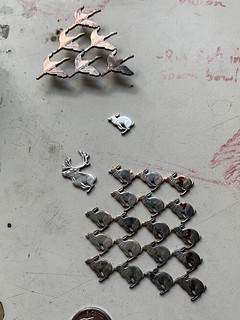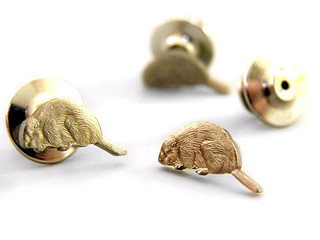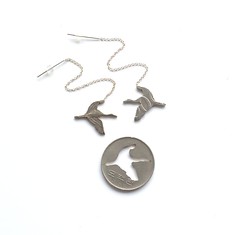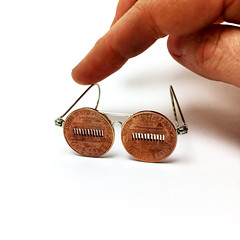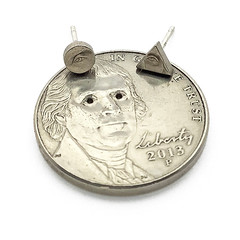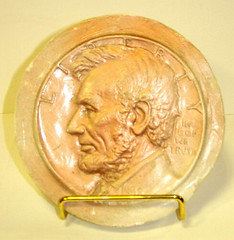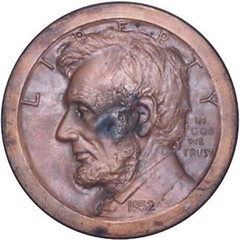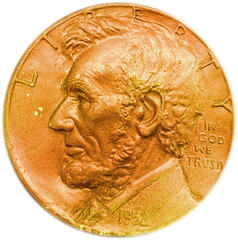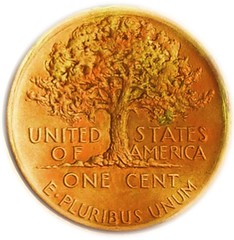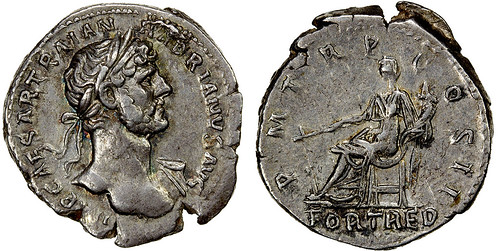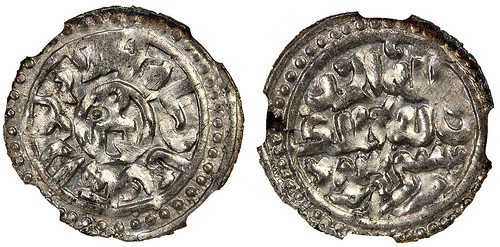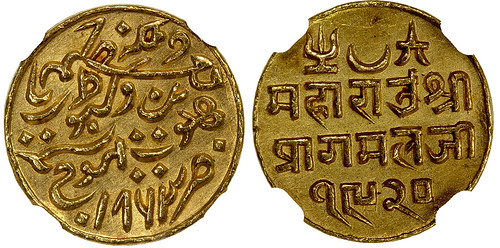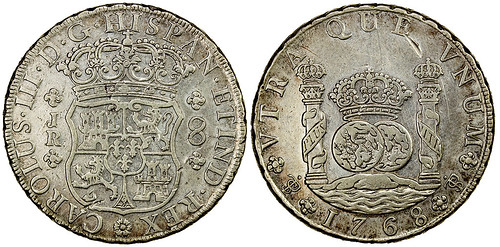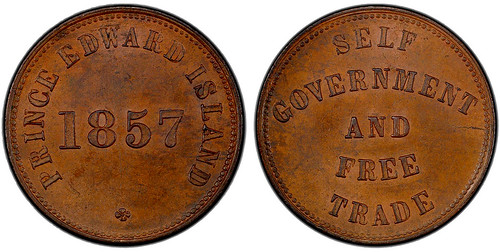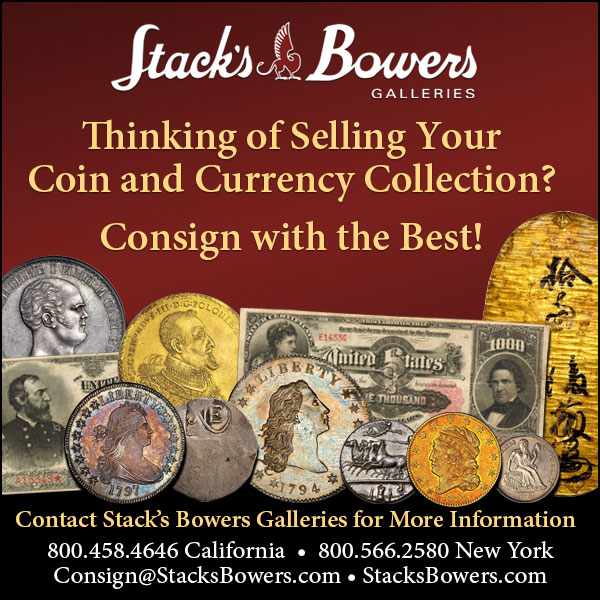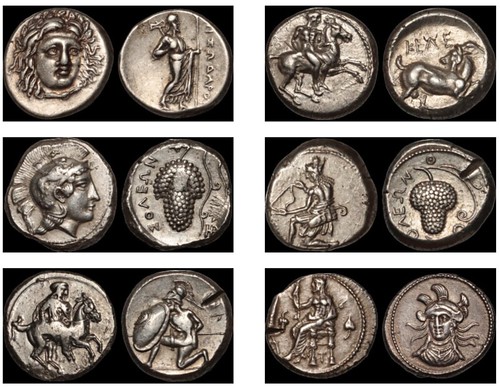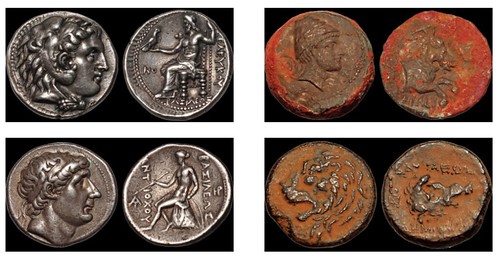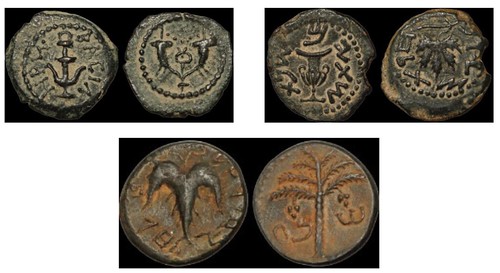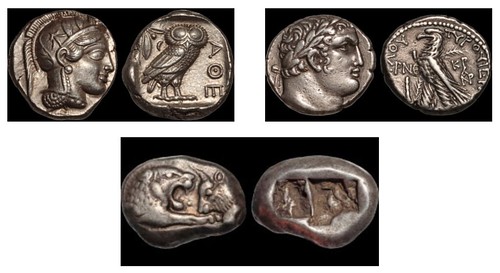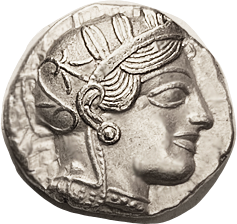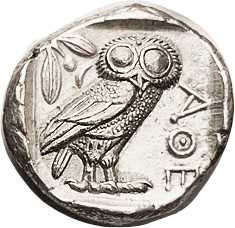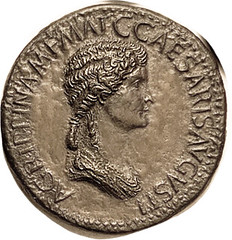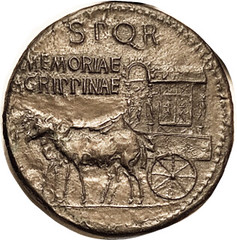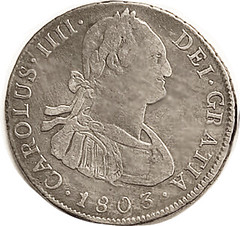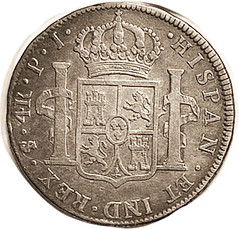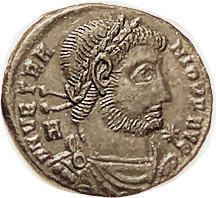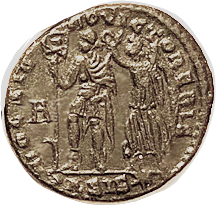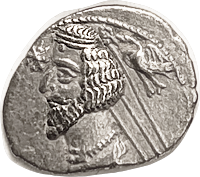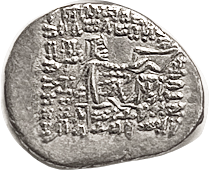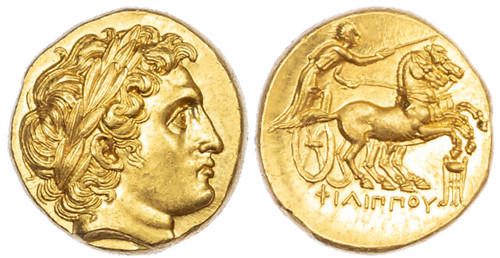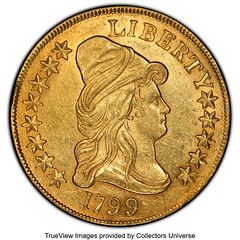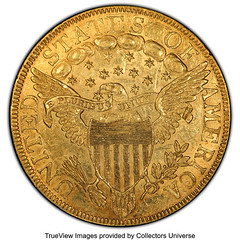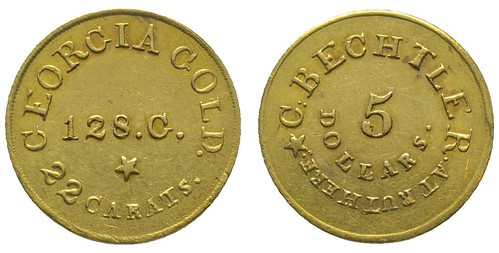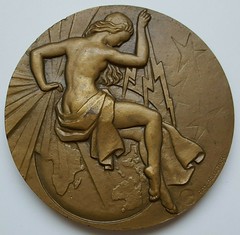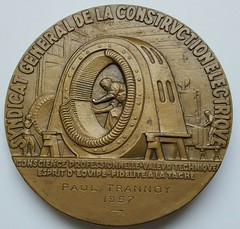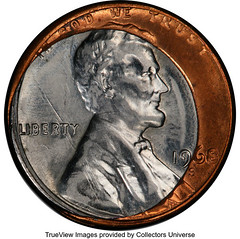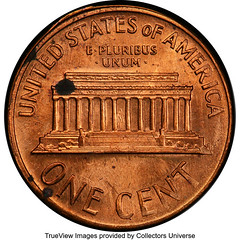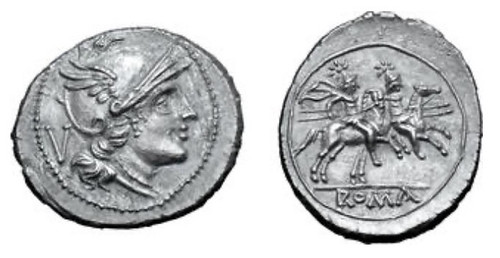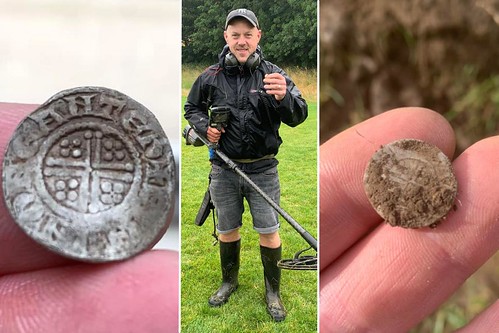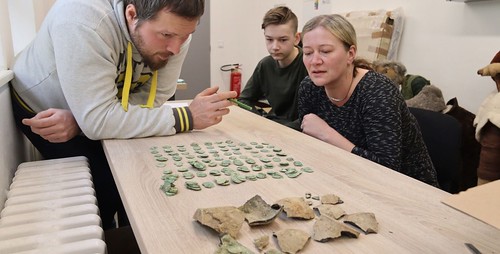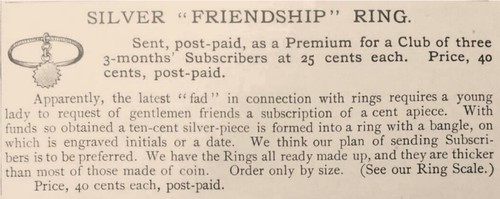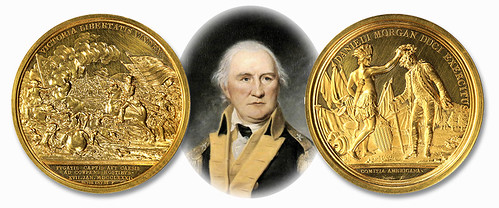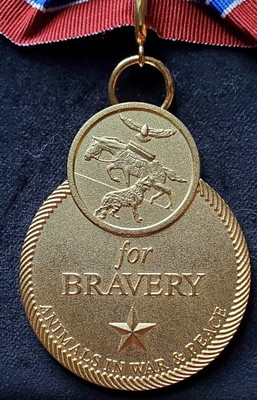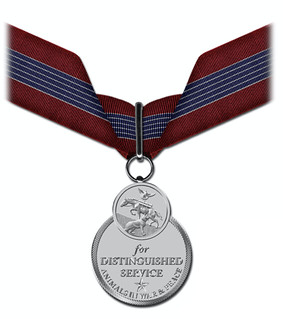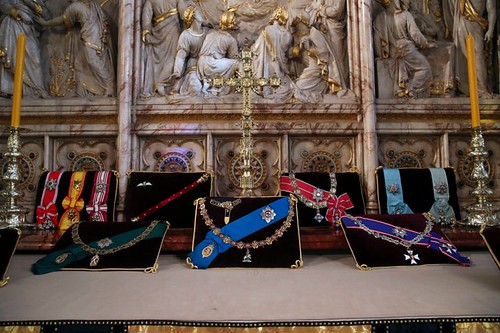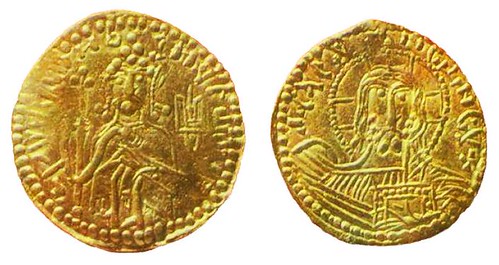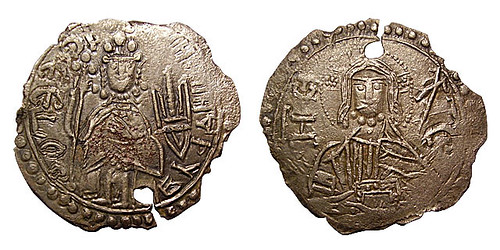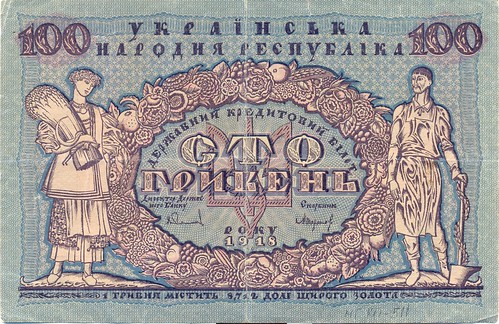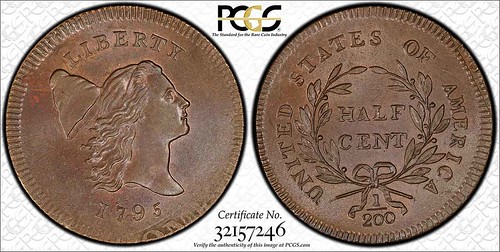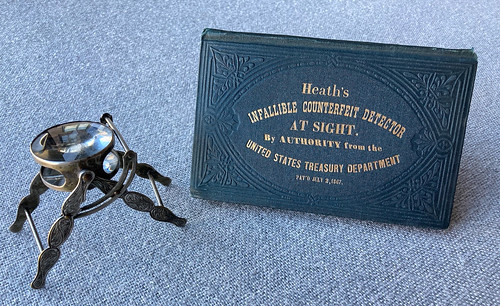
Visit our NBS Sponsors



About UsThe Numismatic Bibliomania Society is a non-profit association devoted to the study and enjoyment of numismatic literature. For more information please see our web site at coinbooks.org SubscriptionsThose wishing to become new E-Sylum subscribers (or wishing to Unsubscribe) can go to the following web page link MembershipThere is a membership application available on the web site Membership Application To join, print the application and return it with your check to the address printed on the application. Print/Digital membership is $40 to addresses in the U.S., and $60 elsewhere. A digital-only membership is available for $25. For those without web access, write to: Charles Heck, Treasurer AsylumFor Asylum mailing address changes and other membership questions, contact Chuck at this email address: treasurer@coinbooks.org SubmissionsTo submit items for publication in The E-Sylum, write to the Editor at this address: whomren@gmail.com BUY THE BOOK BEFORE THE COIN |
- WAYNE'S WORDS: THE E-SYLUM FEBRUARY 27, 2022
- CIVIL WAR TOKEN REFERENCES OFFERED
- NEW BOOK: GUIDE BOOK OF U.S. COINS, 76TH EDITION
- KEN BRESSETT AT 2022 NATIONAL MONEY SHOW
- HENDIN ON BIBLE LORE AND THE ETERNAL FLAME
- FULJENZ ON GUIDE BOOK OF QUARTER EAGLE GOLD
- O'BRIEN ON MONEY, MAYHEM & MIGHT SERIES
- DAVID R. DRURY EDMUNDS (1939-2022)
- NORWEB PAPERS ON NEWMAN PORTAL
- 2022 NEWMAN GRANT PROGRAM ANNOUNCED
- FOURTH NNP SYMPOSIUM ANNOUNCED
- VIDEO: THE TYRANT COLLECTION
- MORE ON THE MINNEHAHA FALLS VIGNETTES
- DENNIS THE MENACE NUMISMATICS
- MORE TELEVISION AND MOVIE NUMISMATICS
- NOTES FROM E-SYLUM READERS: FEBRUARY 27, 2022
- RESEARCHING THE FRED RAUCH ENGRAVED HALF
- MORE ON THE DEUTSCHLAND BALLAST RELIC MEDAL
- THE 1909 ANA ELECTION
BLANK PROXY
BALLOTS - HOWARD R. NEWCOMB
- COIN ARTIST MICAH ADAMS
- JAMES FRASER'S 1952 LINCOLN COIN DESIGNS
- VOCABULARY TERMS: HOT, HOT, HOT!
- DON EVERHART'S CAREER IN COINS, PART 5
- RYDER MOVES FROM U.S. MINT TO GOVMINT.COM
- STEPHEN ALBUM INTERNET AUCTION 14
- DAVISSONS AUCTION 41 GREEK, JUDAIC SELECTIONS
- FRANK ROBINSON ANCIENT COIN AUCTION 118
- NUMISMATIC NUGGETS: FEBRUARY 27, 2022
- THE QUINARIUS
- HENRY III SHORTCROSS PENNY FOUND
- SILVER COIN STASH FOUND IN CZECH REPUBLIC
- FRIENDSHIP RINGS
- GOLD MORGAN COMITIA AMERICANA SURFACES
- ELECTRONICS SNIFFER DOG AWARDED DICKIN MEDAL
- 2022 ANIMALS IN WAR AND PEACE MEDALS
- HISTORY OF UKRAINIAN CURRENCY
- LOOSE CHANGE: FEBRUARY 27, 2022
Click here to read the thin version on the web
Click here to subscribe
Click here to access the complete archive
To comment or submit articles, reply to whomren@gmail.com
Content presented in The E-Sylum is not necessarily researched or independently fact-checked, and views expressed do not necessarily represent those of the Numismatic Bibliomania Society.
WAYNE'S WORDS: THE E-SYLUM FEBRUARY 27, 2022
 We have no new subscribers this week.
We now have 6,967 subscribers.
We have no new subscribers this week.
We now have 6,967 subscribers.
Thank you for reading The E-Sylum. If you enjoy it, please send me the email addresses of friends you think may enjoy it as well and I'll send them a subscription. Contact me at whomren@gmail.com anytime regarding your subscription, or questions, comments or suggestions about our content.
This week we open with one fixed price list, one new book, three book reviews, updates from the Newman Numismatic Portal, and more.
Other topics this week include Civil War tokens, numismatic literature dealer David Edmunds, Emery May (Holden) Norweb, Dennis the Menace, notes from E-Sylum readers, coin artist Micah Adams, James Fraser's coin designs, former U.S. Mint Director David Ryder, auction previews, coin finds, the Dickin medal, and Ukrainian currency.
To learn more about Hetrich & Guttag, Bible coins, Civil War numismatics, the 2022 Newman Grants, the Tyrant Collection, thousands of Confederate Half Dollars, the Case of the Wooden Nickels, the Spingarn medal, researching engraved coins, the 1909 ANA election, Hot Shortness, Friendship Rings, Animals in War and Peace medals, the Belleza Chalice, and Laban Heath's Improved Adjustable Compound Microscope, read on. Have a great week, everyone!
Wayne Homren
Editor, The E-Sylum
CIVIL WAR TOKEN REFERENCES OFFERED
Ken Bauer is selling his collection of Civil War tokens. His fixed price list includes a number of useful books and catalogs on the topic. For more information, contact Ken at ken.bauer@me.com . -Editor
To read the complete pricelist, see:
Sale of
the
Ken Bauer Collection
of
Civil War
Era
Exonumia
________
January
2022
(https://www.dropbox.com/s/ecyyeefh17uoag4/Sale%20of%20the%20
Ken%20Bauer%20Collection%20V2.pdf?dl=0)
NEW BOOK: GUIDE BOOK OF U.S. COINS, 76TH EDITION
Here's the announcement from Whitman for the 76th edition of the classic Red Book. -Editor
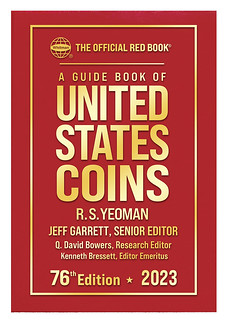 Visitors to the March 31–April 2, 2022, Whitman Coin & Collectibles Expo in Baltimore will have early access to the 2023 (76th) edition of the Guide Book of United States Coins (known to collectors as the
Visitors to the March 31–April 2, 2022, Whitman Coin & Collectibles Expo in Baltimore will have early access to the 2023 (76th) edition of the Guide Book of United States Coins (known to collectors as the Red Book
). After its Expo debut this newest edition of the hobby's best-selling reference will be available from booksellers and hobby shops nationwide. In the meantime, it can be preordered, including at Whitman.com and other online bookstores.
The 76th edition has been expanded to 472 pages. It prices nearly 8,000 entries in up to 9 grades each, with more than 32,000 retail valuations in total. It includes many new features and updated research, plus additions to the book's 1,900-plus color photographs.
Senior Editor Jeff Garrett said, Today's rare-coin market is dominated by collectors, with an emphasis on quality. Auction records continue to be set for outstanding coins and ultra-rarities. Renewed interest in collectibles, financially flush consumers, and fear of inflation have all combined to spark demand across the board for most United States coinage. The 76th edition of the Red Book has more price increases than any in recent years.
Editor Emeritus Kenneth Bressett has worked on the Red Book since 1959. He wrote about the first 75 years of its history in his memoir A Penny Saved: R.S. Yeoman and His Remarkable Red Book. I pity anyone looking for auction bargains today!
Bressett said about the current coin market. Choice coins seem to be high on everyone's wish list. Condition and rarity prompt the most active bidding, and shocking prices. The stimulated activity has also caused price increases in many lower-grade pieces. Are prices too high? Probably not, even though the expanded competition might not last forever. Markets and collector interests have a habit of changing over the years, but seemingly always in an upward direction over any reasonable period of time. The old adage ‘The time to buy is when the piece you want becomes available' is as true today as it has ever been. I see nothing but good times ahead.
Research Editor Q. David Bowers calls the Red Book the most useful single-volume reference a coin collector can add to their library.
Our print runs for the Red Book have sold out faster than normal in recent years,
said Whitman publisher Dennis Tucker. We see this increased demand as a measure of the hobby's growth. The 25 millionth copy of the Red Book was sold in 2021, and strong demand continues in 2022.
The 76th edition, with a cover date of 2023, will be available in formats including the classic red hardcover; the convenient spiralbound softcover that lies flat when opened; and the easy-to-read Large Print Edition.
About the Guide Book of United States Coins
A Guide Book of United States Coins is the world's most popular annual retail price guide for U.S. coins, tokens, and other numismatic items. More than 25 million copies have been purchased since 1946, making it one of the best-selling nonfiction titles in the history of U.S. book publishing.
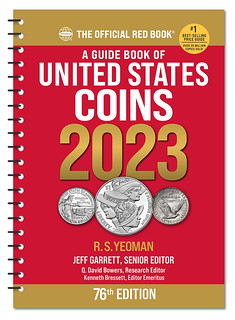 For the 76th edition, more than 120 professional coin dealers, scholars, and other numismatic experts contributed their knowledge under the direction of Senior Editor Jeff Garrett, Research Editor Q. David Bowers, and Editor Emeritus Kenneth Bressett.
For the 76th edition, more than 120 professional coin dealers, scholars, and other numismatic experts contributed their knowledge under the direction of Senior Editor Jeff Garrett, Research Editor Q. David Bowers, and Editor Emeritus Kenneth Bressett.
The 76th edition of the Red Book is available online and at bookstores and hobby shops nationwide. Whitman Publishing offers a Large Print Edition and two formats of the regular edition (hardcover and spiralbound softcover). Details about the eighth edition of the 1,504-page expanded Deluxe Edition, popularly known as MEGA RED™, will be available soon. For more information and to order, visit Whitman Publishing at www.Whitman.com.
About Whitman Publishing
Whitman Publishing is the world's leading producer of numismatic reference books, supplies, and products to display and store coins and paper money. The company's high-quality books educate readers in the rich, colorful history of American and world coinage and currency, and teach how to build great collections. Archival-quality Whitman folders, albums, cases, and other holders keep collectibles safe and allow them to be shown off to friends and family.
Whitman Publishing is the Official Supplier of the American Numismatic Association. As a benefit of membership in the ANA, members can borrow the Red Book (and other Whitman books) for free from the Association's Dwight N. Manley Numismatic Library, and also receive 10% off all Whitman purchases. Details are at www.money.org.
A Guide Book of United States Coins, 76th edition
472 pages
Full color
By R.S. Yeoman; senior editor Jeff Garrett; research editor Q. David Bowers; editor emeritus Kenneth Bressett.
$17.95 convenient lay-flat spiralbound (ISBN 079484961X)
$19.95 classic red hardcover (ISBN 0794849628)
$29.95 Large Print Edition (ISBN 0794849644)
KEN BRESSETT AT 2022 NATIONAL MONEY SHOW
And here's a great opportunity to meet hobby legend Ken Bressett, author and Red Book Editor Emeritus. In the photo Ken and Barbara Gregory (former editor of The Numismatist) examine letters and other artifacts from the archives of Whitman Publishing. -Editor
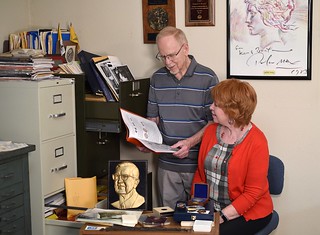 Kenneth Bressett, Editor Emeritus of the Guide Book of United States Coins (the hobby's popular Red Book), will meet and greet collectors and sign books at the American Numismatic Association's National Money Show in Colorado Springs, March 10–12, 2022. The annual convention will be held at the historic Broadmoor Hotel.
Kenneth Bressett, Editor Emeritus of the Guide Book of United States Coins (the hobby's popular Red Book), will meet and greet collectors and sign books at the American Numismatic Association's National Money Show in Colorado Springs, March 10–12, 2022. The annual convention will be held at the historic Broadmoor Hotel.
Bressett will be the featured guest at the booth of official show supplier CollecTons, Thursday morning, Friday afternoon, and Saturday. Exact times will be announced at the show.
In addition to editing the Red Book and Blue Book for more than sixty years, Bressett is the writer of many articles and author or editor of more than two dozen numismatic books on diverse topics such as ancient coins, paper money, grading standards, and English and American coins.
Among his recent works is A Penny Saved: R.S. Yeoman and His Remarkable Red Book, which is a history of Whitman Publishing, a biography of the Red Book's creator, R.S. Yeoman, and an autobiography of Bressett himself. In A Penny Saved, Bressett has compiled never-before-released documents from the Whitman archives. He also shares a treasure trove of family photos, corporate memorabilia, and personal recollections about the Red Book and the coin dealers, collectors, researchers, and others who have made it the biggest-selling book in numismatics.
Bressett's latest volume, Bible Lore and the Eternal Flame, will debut at the ANA National Money Show. In this book he creates an archaeological roadmap of the Old and New Testaments, from the earliest cuneiform writing to pottery, oil lamps, glass, and money. The Roman denarius, the Tyrian shekel, the first coin to feature an image of Jesus, and hundreds of other coins provide a glimpse into daily life and trade in the ancient world, starting with Israel and continuing through Jesus's lifetime to the early years of the Christian church.
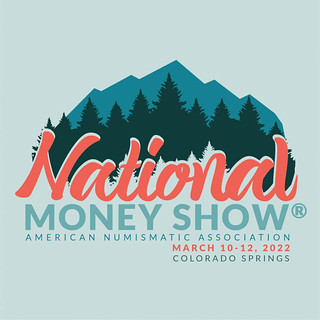 National Money Show hours are Thursday, 10 a.m. to 6 p.m.; Friday, 10 a.m. to 6 p.m.; and Saturday, 10 a.m. to 4 p.m. Admission is free for ANA members, children under 12, and active and retired military personnel (plus up to three additional guests). For the general public on Thursday and Friday, admission is $10. Admission is free for everyone on Saturday.
National Money Show hours are Thursday, 10 a.m. to 6 p.m.; Friday, 10 a.m. to 6 p.m.; and Saturday, 10 a.m. to 4 p.m. Admission is free for ANA members, children under 12, and active and retired military personnel (plus up to three additional guests). For the general public on Thursday and Friday, admission is $10. Admission is free for everyone on Saturday.
The National Money Show will give collectors access to hundreds of dealers offering extensive numismatic inventory at all price levels; an auction; exhibits of rare and historical treasures; and educational programming for both beginning and seasoned hobbyists.
The show is hosted by the nonprofit, Colorado Springs–based American Numismatic Association, which is dedicated to encouraging the study and collection of coins and related items. The ANA helps its members and the collecting public discover and explore the world of money through an array of instructional and outreach programs.
Additional information about the American Numismatic Association is available by visiting money.org or calling (719) 632-2646. National Money Show information is available at money.org/NationalMoneyShow, by calling (800) 482-9828, or by emailing convention@money.org.
To read the earlier E-Sylum article, see:
NEW BOOK: A PENNY SAVED
(https://www.coinbooks.org/v24/esylum_v24n16a02.html)
NEW BOOK: BIBLE LORE AND THE ETERNAL FLAME
(https://www.coinbooks.org/v25/esylum_v25n05a03.html)
HENDIN ON BIBLE LORE AND THE ETERNAL FLAME
Whitman Publishing will soon release Ken Bressett's new book on Biblical coins. Here's a commentary by David Hendin. -Editor
Whitman Publishing's new book by Kenneth Bressett, Bible Lore and the Eternal Flame, will debut in March 2022. The 224-page hardcover volume will be available from bookstores and hobby shops and online (including at Whitman.com), and in the meantime is available for preorder. Here, David Hendin, first vice president of the American Numismatic Society and a noted author in the field of ancient coinage, gives his impression of the book.
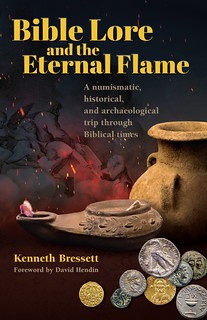 Ken Bressett is one of the grandmasters of numismatics. He has thrilled oh-so-many people with his passion for telling stories that help us understand our own histories through the study of coins. I have had the pleasure of knowing Ken for around 40 years, and his fascination with coins and their stories is clearly infectious to all of his many readers and friends.
Ken Bressett is one of the grandmasters of numismatics. He has thrilled oh-so-many people with his passion for telling stories that help us understand our own histories through the study of coins. I have had the pleasure of knowing Ken for around 40 years, and his fascination with coins and their stories is clearly infectious to all of his many readers and friends.
In Bible Lore and the Eternal Flame, Ken narrates the Greatest Story Ever Told by taking readers on a journey of facts and artifacts going back several millennia, to trace the origins of our Judeo-Christian traditions.
As usual, he fills a gaping need by presenting a narrative for beginners in the study of coins or other small remnants from ancient civilizations. At the same time, if the reader is more experienced, Ken provides plenty of rewards. He is a teacher, a motivator, and a preacher of the numerous positive aspects of the study of coins and other artifacts that link the modern reader to history.
One need not be religious or even agree that the Bible is a divine text to fully appreciate the thrill of reading Ken's narratives and seeing the excellent photographs of the objects being discussed. Ken reminds me very much of my late dad, also a numismatist, when he writes, Knowing that genuine artifacts still exist provides a gateway to strengthening one's faith and provides a tangible connection to the past that can only be experienced through studying or actually seeing some of these interesting items. They are the closest thing to ‘time travel' that one can ever experience.
Ken talks about the invention of writing and shows us examples of the earliest clay tablets with cuneiform letters. In his specialty of numismatics, he discusses trade and commerce from the earliest forms of barter through the precious-metal economy, and into the age of coins in which we still live. Many readers will realize the actual connection between money and writing—the earliest writing was used to keep accurate records of financial transactions and accounts! Coins emerged more than a millennium later than the invention of writing.
Was Jesus a pioneer scholar of numismatics? Perhaps, since he shows us his own interest in money—16 of the 40 parables refer to coins or money, and the topic is mentioned throughout the scriptures more than almost any other subject,
Ken explains.
Ken uses examples of coins of the ancient world, and the stories related to them, to narrate the Judeo-Christian tradition from the invention of coinage right up to the Byzantine period. He begins his story in the days of the Old Testament, a time before coins existed, when shekel
referred to a weight of metal, mainly silver. But, as the story reaches the 30 pieces of silver,
Ken explains that now they are talking about coins—and he identifies them as silver shekels of Tyre. They portrayed a heathen god but were the purest of silver and truest of weight of their time, and they were the only coin accepted by the Temple. Because Jews made pilgrimages to Jerusalem from around the ancient world, they arrived carrying only their local coins. These were converted into Tyre shekels or half-shekels by moneychangers near the Jerusalem Temple and, indeed, it was the behavior of these money changers that caused Jesus to disrupt their business by upturning their trading tables.
Through coins, readers reach the landmark when Rome accepted Christianity at the time of Constantine the Great (A.D. 307–337). Constantine had a dream before the battle of the Milvian Bridge in A.D. 312. In his dream, a flaming cross with the Latin words In hoc signo vinces (By this sign you will conquer
) appeared. From that time forward, the Roman sun god was removed from Constantine's coins and replaced with non-religious depictions,
Ken writes. Fascinating. I am betting that many professors of ancient history do not know this, because many historic details that are reflected in contemporary coins of the realm are often ignored except by specialists.
Ken also tells us that the face of Jesus does not appear on coins until the seventh-century reign of Justinian II. As for the origins of that image—well, Ken will tell the story better than I can here, so read his book!
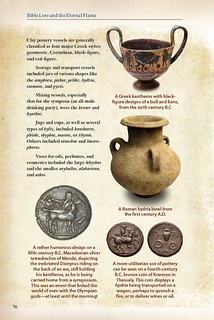 Many readers of Bible Lore and the Eternal Flame will be surprised to learn that so many objects used around the time of Jesus still exist and can be seen in museums and private collections throughout the United States and the world. Ken not only tells us about these objects—from coins to oil lamps and ancient glass—but shows us photos of fascinating examples.
Many readers of Bible Lore and the Eternal Flame will be surprised to learn that so many objects used around the time of Jesus still exist and can be seen in museums and private collections throughout the United States and the world. Ken not only tells us about these objects—from coins to oil lamps and ancient glass—but shows us photos of fascinating examples.
Indeed, each of these ancient objects is a portal to a continuum of human life across 4,000 years, an authentic key to the mind. Is every story true? We can never know. But Ken weaves tales that have been reconstructed by scholars since the Renaissance.
I found Bible Lore and the Eternal Flame to be a fun and fascinating book, and I'm happy to encourage you to read it, too.
Bible Lore and the Eternal Flame, first edition.
By Kenneth Bressett; foreword by David Hendin.
ISBN 0794849768. Hardcover, 6 x 9 inches, 224 pages, full color.
Retail $19.95 U.S.
To read the earlier E-Sylum article, see:
NEW BOOK: BIBLE LORE AND THE ETERNAL FLAME
(https://www.coinbooks.org/v25/esylum_v25n05a03.html)
FULJENZ ON GUIDE BOOK OF QUARTER EAGLE GOLD
Whitman Publishing will soon release Dave Bowers's new book on Quarter Eagle Gold coins. Here's a commentary by Mike Fuljenz. -Editor
Q. David Bowers's Guide Book of Quarter Eagle Gold Coins will debut in March 2022. The 448-page volume will be available from bookstores and hobby shops and online (including at Whitman.com), and in the meantime is available for preorder. Here, professional numismatist Mike Fuljenz discusses the book, its subject matter, and its famous author.
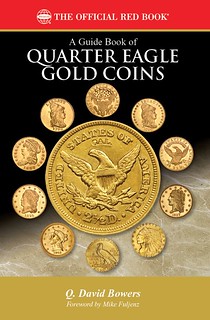 Whenever Q. David Bowers releases a new book, numismatists everywhere smile. His literary contributions are legendary. More than 30 years ago Bowers's importance was recognized by the Numismatic Literary Guild when he was awarded the Clemy, the group's top award for long-term literary excellence.
Whenever Q. David Bowers releases a new book, numismatists everywhere smile. His literary contributions are legendary. More than 30 years ago Bowers's importance was recognized by the Numismatic Literary Guild when he was awarded the Clemy, the group's top award for long-term literary excellence.
What is less known, perhaps, is David's wonderful leadership qualities, which were on display when he served as president of the American Numismatic Association in the early 1980s.
When I first met Dave, I was a young (27) grader/authenticator for the American Numismatic Association Certification Service (ANACS), joining a ANA board meeting in Colorado Springs. At the time, the board of ANA luminaries was debating whether to change the way our grading service described coins, from numbers to adjectival grading. We graders pointed out that the hobby and our customers preferred numerical grading. Many of the board's elder statesmen (and stateswomen) preferred adjectives like Choice Uncirculated
to a numerical grade like MS-63.
With 20/20 hindsight, I think we graders not only had a better crystal ball for the future, but we also understood what the majority of our members wanted.
President Bowers agreed with us younger graders and adroitly led the board to a decision to forego changing our grading methodology to an adjectival system. I will never forget his respectful command and leadership in that important board meeting. As the newest grader—just six weeks on the job—he may have saved my job (as last-in, first-out). Thanks, Dave!
ANACS was founded in part by Virgil Hancock, also a past president of the ANA. Counterfeits and altered coins were becoming a growing problem in the 1970s, so the ANA formed ANACS to assist collectors wanting to know if their coins were genuine. In 1979 Virgil Hancock and Larry Spanbauer wrote Standard Catalog of United States Altered and Counterfeit Coins to help collectors and dealers identify the most prevalent counterfeits in the market. This became our favorite authentication guide at ANACS when I worked there in 1982 and 1983. When you turn to the book's acknowledgement page, only a few industry leaders were recognized for their help and advice, and the first person acknowledged is, of course, Q. David Bowers.
Forty years later, Dave continues to provide valuable insights throughout his new book on quarter eagles, including warnings about counterfeit and altered coin dangers. For example, he wisely notes that the 1911-D quarter eagle is often produced by adding a D
to a 1911 Philadelphia Mint coin. Dave also reminds us that while the lettering and motifs on the Indian Head quarter eagle are recessed, a departure from the normal relief style, curiously the mintmark is raised above the field on the branch-mint coins struck in Denver in 1911, 1914, and 1925. Dave also points out that collectors should look for strong D mintmarks on the rare 1911-D coins. That tip alone to the beginner is worth the price of admission to the Guide Book of Quarter Eagle Gold Coins.
Like Dave, I had to work odd jobs to buy coins in my teen years. Neither of us could afford the rarities we dreamed about owning. Many yards were mowed to be able to buy silver coins, but my first gold coins were the incused quarter and half eagle I bought after winning $50 playing bingo with my grandmother. Thus, I truly appreciate Dave writing a book about one of the first gold coins I was so proud to call my own.
Like many collectors back in the day, I had to get a special plastic holder to display and protect my first precious rarity, and I had to carefully put all the plastic screws in place with my favorite small screwdriver. I am sure Dave had similar holder experiences. Dealers back then sometimes provided a four- or eight-piece type-set plastic holder with the purchase of one coin, in order to encourage set building. This was an old-time form of a continuity marketing
program.
The Guide Book of Quarter Eagle Gold Coins is described on the title page as a Complete History and Price Guide,
and it lives up to that description. Every design and coin in the denomination is covered in depth, from 1796 to 1929, including circulation strikes, Proofs, patterns, and all varieties.
The first quarter eagle was struck in 1796, a year after the Philadelphia Mint first released the half eagle and eagle. The eagle represented $10, hence a quarter eagle was the $2.50 denomination. The double eagle ($20) gold coin would not be minted until another 50-plus years, in 1849.
America's quarter eagles were minted in years when the country's hard dollar
was backed by the gold standard. Dave Bowers not only addresses the beginning of this denomination but also includes information about what brought an end to this popular collector coin. He includes excerpts from the March 1930 Numismatist that speculates about a strain on our gold reserves caused by European withdrawals or, more likely, the Treasury trying to maintain its gold supply at preferred levels.
Dave includes many interesting tidbits throughout the book. For example, he points out that quarter eagles were popular with the more affluent for gift giving, so banks carried extra of those coins at Christmas. Similarly, today banks often order extra $2 bills at Christmastime. These $2 Thomas Jefferson bills are their most requested note for holiday gift giving. The director of the Bureau of Engraving and Printing told me the bills are also the most popular seller on their website.
While the Guide Book of Quarter Eagle Gold Coins is enjoyable to read as history, it also serves as a useful collector reference. If you want to review selected auction results, they are right at your fingertips. If you are a student of die varieties, this book is for you, too. If you like date-by-date analyses, welcome to them! If you like Proof coins, you need this book. If you are interested in the opinion of our country's foremost numismatist on how many quarter eagles were melted, you need this book. If you want to know what Bowers thinks about grading and survival rates in various coin grades, you need this book. If you find striking characteristics interesting, here's your source. If patterns are your cup of tea, this book is a must. If you like the latest information on die and planchet preparation by mint, this book is for you. If you want information on important quarter eagle collections, hoards, and treasure finds, you need this book. If you want helpful distribution information by mint, get this book. If you want helpful numismatic morsels—like Proof mintages from the 1840s to the 1870s being frequently overstated or just speculations, as those coins would be struck and sold, but if buyers failed to materialize, the leftovers were melted—this book is for you. If you want to know more about why there were quarter eagle shortages over the years, you need this book.
For these reasons and more, every gold coin enthusiast needs the Guide Book of Quarter Eagle Gold Coins. This book truly lives up to its description as A Complete History and Price Guide.
Q. David Bowers takes you on a fascinating journey through history using the quarter eagle as his time machine.
His life experiences, knowledge, and immeasurable skills provides money-saving and money-making insights into this denomination. There's no other book like it on quarter eagles. Most importantly, Dave's contribution will be the foundation for many new enthusiasts to begin their lifelong journey enjoying and collecting this important denomination. Having the Guide Book of Quarter Eagle Gold Coins on your shelf is a must. and I will be referring to it periodically forever—and always with a smile.
Mike Fuljenz is a nationally renowned expert in precious metals and coins, and the author of several books on gold coins. His books, commentary, and media appearances have earned a number of awards, including the Numismatic Literary Guild's Book of the Year
award. Mike is the president of Universal Coin & Bullion, based in Beaumont, Texas.
A Guide Book of Quarter Eagle Gold Coins, first edition.
By Q. David Bowers; foreword by Mike Fuljenz.
ISBN 0794847331. Softcover, 6 x 9 inches, 448 pages, full color.
Retail $29.95 U.S.
https://whitman.com/a-guide-book-of-quarter-eagle-gold-coins/
To read the earlier E-Sylum article, see:
NEW BOOK: GUIDE BOOK OF QUARTER EAGLE GOLD
(https://www.coinbooks.org/v25/esylum_v25n04a03.html)
O'BRIEN ON MONEY, MAYHEM & MIGHT SERIES
Daniel L. O'Brien of Nevada submitted this review of the Money, Mayhem & Might series of books on Civil War numismatics by Rick Lank "The Coiner" and Becky Rush "Talisman". Thank you. -Editor
When I was young (64 or 65 years ago), I had an uncle who came to visit. He was a long-haul truck driver and he stayed with us for close to a week (people used to do that back then - come to visit and stay more than a couple of hours), during which time I showed him my coin "collection" (a couple of mercury dimes and a few buffalo nickels) which I had pulled from "circulation" (my Dad's trouser pockets while he was asleep).
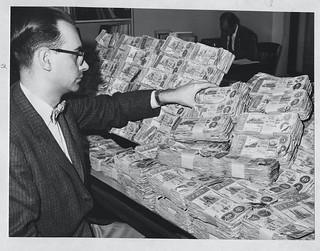 My uncle then showed me a small footlocker that he had brought with
him which was full of confederate currency. He said he would pick up
the currency at various places when traveling "down South." He was pretty proud of it and I enjoyed looking at some of the curious
vignettes. He told us that the money had no value, but he collected the
stuff anyway. I was fascinated by the fact that a footlocker full of
money could have little or no value (back then). I had always wondered
about how he could have come by such a glorious stash of money.
My uncle then showed me a small footlocker that he had brought with
him which was full of confederate currency. He said he would pick up
the currency at various places when traveling "down South." He was pretty proud of it and I enjoyed looking at some of the curious
vignettes. He told us that the money had no value, but he collected the
stuff anyway. I was fascinated by the fact that a footlocker full of
money could have little or no value (back then). I had always wondered
about how he could have come by such a glorious stash of money.
But I was quite young and over the years I didn't give it much thought. Then, I read the book "Sahara" and, although the book dealt with Confederate Gold, I recalled the old footlocker full of Confederate currency. It wasn't until I saw a review of the book "Where did all the Southern Dough go?") in The E-Sylum that I had even considered what people would do about their country's money if they were facing defeat.
Your books (I have only read two of them so far) highlighted an issue that I had never even considered previously. Your books have really brought the issue to life! You are very adept at portraying the human interests that were involved and the real-life drama that the individuals involved endured. The detail and imagery portrayed in your books kept me on the edge of my seat. I was unable to put either of the two books down and I read each book in a single sitting. That is why I asked when the movie was coming out! One doesn't have to take sides (on the North v. South issue) to appreciate and enjoy the heart-stopping action.
OK, so this is not as short as I had anticipated. I think it was Thomas Jefferson who once said something along the lines: "I am sorry that this letter is so long, but I did not have sufficient time to make it shorter."
My interest in your stories (to answer your question) stems from the fact that I have now been a coin collector (a few pieces of currency, but nothing to speak of) for over fifty years and I have come to enjoy the stories behind the coins as much or more than I enjoy the coins themselves. I believe that had I read something along the lines of your books when I was younger, I would have been a much better student of history and a dedicated numismatist. And I certainly would have tried to pry away some of my Uncle's stash while it was still intact (he passed forty years or so ago).
That is the long and short of it. Your books hit a nerve and I cannot wait to read more about the adventures of the Confederate Money Train!
To read the earlier E-Sylum articles, see:
NEW BOOK: THE CONFEDERATE TREASURE TRAIN
(https://www.coinbooks.org/v23/esylum_v23n46a04.html)
CONFEDERATE MONEY AFTER THE CIVIL WAR
(https://www.coinbooks.org/v24/esylum_v24n19a31.html)
NEW BOOK: MINTING PRINTING & COUNTERFEITING
(https://www.coinbooks.org/v24/esylum_v24n21a03.html)
NEW BOOK: SUMPTUOUS SOUTHERN STORIES
(https://www.coinbooks.org/v24/esylum_v24n41a03.html)
DAVID R. DRURY EDMUNDS (1939-2022)
Numismatic book dealer Douglas Saville submitted this remembrance of U.K.-based rare book seller David Edmunds. So sorry to hear this news. -Editor
AN APPRECIATION
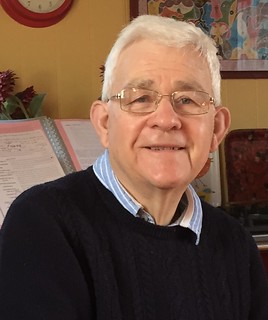 David Edmunds died tragically in a car accident in Essex on 14th February, 2022, he was driving to view lots in an upcoming auction. He was 82.
David Edmunds died tragically in a car accident in Essex on 14th February, 2022, he was driving to view lots in an upcoming auction. He was 82.
David was a long-standing friend of mine- since 1970.
John Drury Rare Books was founded by David Edmunds in 1971. His specialization from the beginning was numismatic books.
In September 1969, I joined Spink's in London as assistant to Howard Linecar, the Manager of the Book Department. Howard had been with the company since the mid-1930s, and he had always focussed on publishing standard works of reference on Numismatics - coins, medals, tokens, orders and decorations and paper money, and Spink's maintained a very large and important stock of in-print books on those subjects. Howard was also the long-standing Editor of Spink's Numismatic Circular.
Soon after I started at Spinks, I began to deal in second-hand and rare numismatic books, and I began to list them for sale in the ‘Circular from the later months of 1970.
David Edmunds was a customer of mine, and soon we established a friendship. I was learning about these books, albeit slowly. David had already been collecting such books for some years; and the experience gained meant that he already had a good knowledge of the subject - and a very good collection, especially focussed on trade tokens - David's particular interest had always been the social history of Great Britain.
In early 1971 David told me he intended to start a business specialising in Rare Numismatic Books, based in Colchester, and his collection would serve as his initial stock.
Catalogue One. John Drury. Rare Books on Numismatics, with a few on Art, Gems, Archaeology and Heraldry, was published in early 1971. 282 items listed for sale at fixed prices, all neatly described and divided into sections: 16th & 17th century Numismatic Books…. 18th century Numismatic Books…. 19th & 20th century Numismatic Books…. Art, Archaeology, Gems & Heraldry…..Addenda.. I ordered a few (less expensive) items, but frankly I recognised fewer than 10% of the books listed for sale in that catalogue….. I had some learning to do!
David issued four or five such catalogues annually. I always managed to buy some books for stock and for customers, and I have fond memories of visiting David in his office/storeroom in East Stockwell Street in Colchester- I always found good things to buy. As David was an outstandingly good cataloguer and researched his material so well - he rarely made mistakes, unfortunately for me – and although I learned over the years, I could buy fewer really-outstanding items than I would have liked. Many of my customers bought direct from him.
One of David's earlier truly outstanding catalogues (1973) was his Catalogue Twelve. Numismatic Literature 1790-1970 (Including a Choice selection of books on Trade Tokens). Out of a total of 742 items were included- no less than almost 100 books on British Tokens, some of which unique, many very rare and almost all very desirable- to say the least. I managed to purchase a good number of them- mostly for clients, but also a good percentage for stock…… I was starting to learn…... David and I used to have lunch at least once a month in London – I was based in the very centre of London in St. James's….. and we discussed the market
- and it was a sort of game of poker between the two of us, and it was fun
. The market for rare numismatic books was escalating in the 1970s
Our good friend George Kolbe had his first major public auction sale in 1979 in Los Angeles at the COIN show. David and I went – who was this G. Frederick Kolbe? - I think it was the first trip for both of us to the west coast. Between us we bought a truly huge pile of stock from George, and we agreed to split it between us once it had arrived in London. By that time David had become the Managing Director of the newly-established Seaby Rare Books, a part of the old B. A. Seaby company. The bookselling part of the main dealership lasted for just two years, only to be wound up by Seaby's in 1981. The market was less than easy at the time. David continued to deal in numismatic and other books until he eventually sold the remaining stock of the former to George Kolbe.
After this time David continued to deal in books, pamphlets, broadsides & manuscripts in the area of Social History, and more especially economics.
David and I had a good working relationship, and we respected one another. We attended many auctions together, in London at Sothebys and Christies, and one or two in provincial auction rooms. The more memorable sales we both attended were abroad – The Lepczyk sale in East Lansing, Michigan, in April 1980 –and travelling there, we were the only two passengers in a small twin- engined plane flying from Chicago to East Lansing - in horrendous weather, and we wondered if we would ever make it to East Lansing.
Then there was the truly amazing library of the Princes Furstenberg from Donaueschingen, sold by Sothebys in Zurich in June 1982, where almost all the books were exceptionally fine, all unopened and many as clean as the day they were printed….. but the market in general was terribly bad at the time, and neither of us had the courage to buy as much as we ought to have done. I recall selling everything I bought within a week of receiving the books and regretting being too prudent at the sale….. a learning curve for both David and me.
After David disposed of his stock to George, we seldom met up, but we would often speak on the telephone - David always seemed to have something of interest to me. It was a delight to visit his home/office in a beautiful setting in rural Essex overlooking the River Stour Nature Reserve, and the lunches prepared by his wife and long-term business partner Jenny.
I will miss David - he had always been there, in the background as it were, for me, for 50 or more years, and always a good sounding-board, and was instrumental in changing the numismatic book market forever.
Numismatic Bibliomania Society cofounder George Kolbe submitted this remembrance. -Editor
Preceding Joe Lepczyk's memorable April 1–2, 1980 auction sale featuring several hundred lots of desirable numismatic works, three recent acquaintances were seated at the cocktail bar in an East Lansing, Michigan hotel, playing Liar's Poker.
I had met Douglas Saville on my first trip to Europe in the late 70s, and John Drury, i.e., David Edmunds, had attended my second C.O.I.N. sale in Los Angeles, ten months earlier. After a day spent viewing lots, the three of us were positively giddy at the prospects of acquiring desirable numismatic titles for clients and for stock. We all did well, particularly David and Douglas. Though competently described for the most part, a number of sleepers
made the sale truly a memorable event.
In the ensuing years I travelled to Europe frequently, nearly always making a stop in London to visit Douglas Saville at Spink & Son Ltd., and sometimes seeing David Edmunds as well. The 1979-81 glory years, when David maintained a wonderful rare numismatic book room on the premises of B.A. Seaby, are remembered fondly. Several years after the dissolution of their ill-timed cooperative venture (the early 80s were tough sledding for numismatic booksellers), David invited me to Wrabness to buy his stock: a quite wonderful offering of antiquarian numismatic books and manuscripts.
Located down a country lane in Essex near the banks of the River Stour—in a charming old red brick home David had recently bought—spacious book shelves were in the process of being installed. We saw each other a few times after and the occasional book changed hands.
David ushered in a new era in the world of antiquarian numismatic books. Possessed of an excellent classical, public-school education, David accorded his books the greatest respect: as desirable objects in and of themselves. His many fixed price catalogues, from the early 1970s on, served as an inspiration to me and other numismatic bibliopoles. Meticulously catalogued with bibliographical references aplenty and new insights into their content, David's descriptions are still consulted with profit. In the larger world of antiquarian booksellers, David utilized his enviable talents as a prominent dealer in the field of economics. For those of us with a narrower focus, the name of D.R.D. Edmunds (John Drury) will always be revered. He changed the way numismatic books are sold.
The photo of Edmunds is courtesy the Edmunds family via David Fanning. The Drury numismatic book catalog images are courtesy David Fanning. See also The Numismatic Book Catalogues of John Drury by David Fanning in The Asylum Spring 2017 issue (v35 n1). Thanks, everyone. -Editor
To read Eric Newman's John Drury Correspondence on the Newman Portal, see:
John Drury Correspondence, 1973-1977
(https://nnp.wustl.edu/library/book/521682)
To visit the John Drury Rare Books website, see:
https://www.johndruryrarebooks.com/
NORWEB PAPERS ON NEWMAN PORTAL
The latest addition to the Newman Numismatic Portal is the archival papers of the Norweb family collection. Project Coordinator Len Augsburger provided the following report. Thanks. -Editor
Norweb Papers on Newman Portal
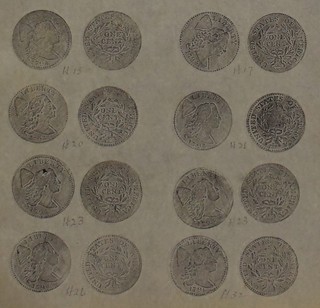 The Norweb pedigree is well known to collectors, with many no doubt aware of the Bowers & Merena sales of this important American collection in 1987-1988. Recently scanned at the American Numismatic Society are the archival papers of the Norweb family collection, including the collection ledgers and a book of coin rubbings created by Emery May (Holden) Norweb in her youth. The collection ledgers form the main part of this group, numbering five volumes, covering catalog nos. 1-16,999, and representing collection purchases through 1957. These ledgers were extensively referenced during the preparation of the Norweb collection sale catalogs.
The Norweb pedigree is well known to collectors, with many no doubt aware of the Bowers & Merena sales of this important American collection in 1987-1988. Recently scanned at the American Numismatic Society are the archival papers of the Norweb family collection, including the collection ledgers and a book of coin rubbings created by Emery May (Holden) Norweb in her youth. The collection ledgers form the main part of this group, numbering five volumes, covering catalog nos. 1-16,999, and representing collection purchases through 1957. These ledgers were extensively referenced during the preparation of the Norweb collection sale catalogs.
Illustrated here are rubbings of a group of 1794 large cents, catalogued by Hays numbers. Note how Norweb carefully positioned the coins in order to capture the die rotation. Thanks to ANS Librarian David Hill for his assistance with this project.
Link to Norweb archives on Newman Portal:
https://nnp.wustl.edu/library/archivedetail/545088
Link to William Hayes' Varieties of United States Cents of the Year 1794 on Newman Portal:
https://nnp.wustl.edu/library/booksbyauthor/939
Link to Bowers & Merena auction sale catalogs on Newman Portal:
https://nnp.wustl.edu/library/auctioncompanydetail/4
THE BOOK BAZARRE
2022 NEWMAN GRANT PROGRAM ANNOUNCED
Applications are being accepted for the 2022 Newman Grants from the Eric P. Newman Numismatic Education Society. Here's the press release. Previous recipients have made excellent contributions to numismatic research. What great project do YOU have in mind? -Editor
Eric P. Newman Numismatic Education Society Invites Applications for Newman Grants
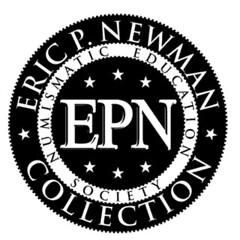 The Eric P. Newman Numismatic Education Society (EPNNES) announces the opening of the application period for the 2022 Newman Grant program. Newman Grants are designed to financially assist numismatic authors and organizations pursuing original research in American numismatics. This program was launched in 2019 and supports research projects related to colonial numismatics, U.S. federal coinage, counterfeit detection, and other areas.
The Eric P. Newman Numismatic Education Society (EPNNES) announces the opening of the application period for the 2022 Newman Grant program. Newman Grants are designed to financially assist numismatic authors and organizations pursuing original research in American numismatics. This program was launched in 2019 and supports research projects related to colonial numismatics, U.S. federal coinage, counterfeit detection, and other areas.
Authors, researchers, and numismatic organizations are encouraged to apply for amounts between $1,000 and $5,000. Awards may be applied toward related research costs including but not limited to photography, reproduction of research material and graphic art services, database access fees, and travel. Electronic publications will be preferred as EPNNES wishes to direct funds toward expenses specifically related to numismatic research, rather than the print publication of research. Newman Grant awardees agree to non-exclusive publication of their research on the Newman Numismatic Portal (NewmanPortal.org). EPNNES intends to make approximately half a dozen grants in 2022.
The Newman Grant program is administered for EPNNES by the Newman Numismatic Portal (NNP). Applications may be found on the Newman Numismatic Portal at https://nnp.wustl.edu/library/archivedetail/530553?Year=2022 and should be submitted to NNPCurator@wustl.edu. The application deadline is April 15, 2022, with the grant awards to be announced on May 25, 2022, coincident with the late Eric P. Newman's birthday.
It is the hope of EPNNES that this program will continue the legacy of Eric P. Newman in a way that would reflect his high standards for numismatic research.
FOURTH NNP SYMPOSIUM ANNOUNCED
A new NNP Symposium is on the way! Here's the announcement. Be sure to register now for future updates, and please consider becoming a presenter. What can you tell the world about your area of numismatics? We'd love to hear your story! -Editor
Newman Numismatic Portal Announces Fourth NNP Symposium, April 8-10, 2022
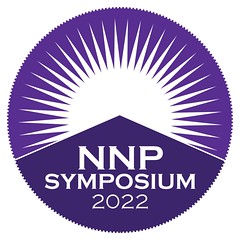 Launched in August 2020, the Newman Numismatic Portal (NNP) Symposium brings together a diverse selection of numismatic presentations into a concentrated, three-day, Zoom-based format. Previous Symposia featured talks on a variety of topics including U.S. federal coinage, tokens and medals, paper money, and ancient and world numismatics. The complete set of nearly a hundred presentations from previous events, produced by Lianna Spurrier of Numismatic Marketing, are available for viewing at
https://nnp.wustl.edu/library/multimediadetail/539070.
Launched in August 2020, the Newman Numismatic Portal (NNP) Symposium brings together a diverse selection of numismatic presentations into a concentrated, three-day, Zoom-based format. Previous Symposia featured talks on a variety of topics including U.S. federal coinage, tokens and medals, paper money, and ancient and world numismatics. The complete set of nearly a hundred presentations from previous events, produced by Lianna Spurrier of Numismatic Marketing, are available for viewing at
https://nnp.wustl.edu/library/multimediadetail/539070.
Newman Portal is pleased to announce the fourth NNP Symposium, which will take place via Zoom on April 8-10. While the course of the COVID pandemic remains unpredictable, online events have proven a reliable way of sharing numismatic knowledge across a widespread audience. Even more so, many numismatic organizations are seeing increased member engagement as in-person events are opened to virtual audiences.
Viewers from previous Symposia noted It's a good opportunity for those who cannot travel to an American Numismatic Association convention or a major show where presentations may be held
and Thank you for the fantastic job on the Symposium. I attended as many as I possibly could and will finish the ones I missed as soon as they are posted.
The NNP Symposium invites individual presenters and numismatic organizations to register for a Symposium meeting slot. Inquires may be sent to https://nnpsymposium.org/for-presenters. Dealers are welcome to participate and might use this time to introduce their business or present selected inventory highlights. The NNP Symposium staff will ensure smooth delivery of all content by moderating each session and providing Zoom training to attendees and presenters prior to the event.
A sampling of committed speakers as of press time includes Chris McDowell, editor of the Journal of Early American Numismatics, Wayne Homren, editor of The E-Sylum, and Jesse Kraft, Assistant Curator of American Numismatics at the American Numismatic Society. The feature presentation will be a behind-the-scenes look at the Dell Loy Hansen collection, one of the greatest collections of U.S. coins ever formed, and still growing.
NNP Symposium attendees should register at https://nnpsymposium.org and will receive periodic updates including overall schedule and meeting links. Symposium registration is free, in keeping with the NNP philosophy of providing numismatic information on a free-and-forever basis.
VIDEO: THE TYRANT COLLECTION
These are selections from the David Lisot Video Library that feature news and personalities from the world of coin collecting. David has been attending coin conventions since 1972 and began videotaping in 1985. The Newman Numismatic Portal now lists all David's videos on their website at:
https://nnp.wustl.edu/library/multimediadetail/522852
Here's one with John Dannreuther discussing the Tyrant Collection. -Editor
Coolest Coins of the United States Ever Put Together in One Collection: Highlights of The Tyrant Collection of US Type Coins.
VIDEO: 18:50.
John JD
Dannreuther, Numismatic Consultant, The Tyrant Collection,
David Lisot, Video Producer, CoinTelevision.com. August 10-14, 2021.
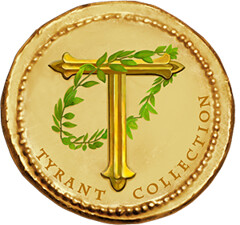 The Tyrant Collection is comprised of the most rare and most beautiful coins in existence. Money was no object in the selection of these numismatic masterpieces. John Dannreuther has been a consultant for The Tyrant Collection for more then 15 years. He tells stories and describes the rarity of highlights in the collection.
The Tyrant Collection is comprised of the most rare and most beautiful coins in existence. Money was no object in the selection of these numismatic masterpieces. John Dannreuther has been a consultant for The Tyrant Collection for more then 15 years. He tells stories and describes the rarity of highlights in the collection.
An excerpt of the video is available for viewing on the Coin Television YouTube Channel at:
https://youtu.be/_pu6W-uMIkA
MORE ON THE MINNEHAHA FALLS VIGNETTES
Pete Smith submitted these notes on the Minnehaha Falls vignettes discussed in John Ferreri's article last week. Thank you! -Editor
I have several items in response to the article by John Ferreri on the Minnehaha Falls vignettes.
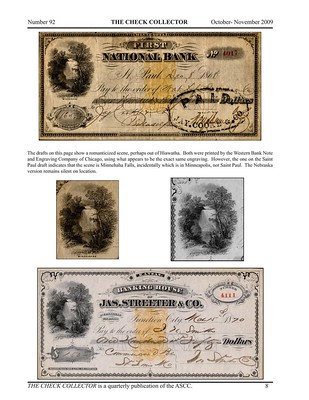 The October 1, 2009, issue of The Check Collector illustrates two checks with the image of Minnehaha Falls and the Indians. The article indicates these were printed by the Western Bank Note and Engraving Company of Chicago. Under one is the word Minnehaha indicating that the name was known by 1868. The vignettes are similar to the banknote vignettes but not identical.
The October 1, 2009, issue of The Check Collector illustrates two checks with the image of Minnehaha Falls and the Indians. The article indicates these were printed by the Western Bank Note and Engraving Company of Chicago. Under one is the word Minnehaha indicating that the name was known by 1868. The vignettes are similar to the banknote vignettes but not identical.
Did Western copy from the ABNCo vignettes or do both come from a common source? I am not aware of another illustration that would have been that source.
In about 1820, the United States built Fort Saint Anthony in Indian territory at the confluence of the Minnesota and Mississippi Rivers. It was renamed Fort Snelling in 1825. Various treaties opened the land for white settlement. Steamboats came up the river as far as St. Paul which was incorporated in 1854. Upriver was the Falls of Saint Anthony with the Township of Saint Anthony established on the east side of the falls in 1855. The Township of Minneapolis was established on the west side of the falls in 1858.
Between the fort and the falls was another smaller waterfall, shown on the first maps as Brown's Falls. The native Dakota Indians used the word minnehaha, which generally translates as falling water, for both falls. By 1849 the name Minnehaha was applied to the smaller falls and it was a tourist attraction when Minnesota became a territory in 1849.
In 1852, before the towns were incorporated, travelling photographer Alexander Hesler (1823-1895) took a daguerreotype from the north side of the creek. It was reported that Henry Wadsworth Longfellow saw the photo and took inspiration to choose the name of Minnehaha for the character in Song of Hiawatha, published in 1855.
As Minneapolis developed, the names of Longfellow, Hiawatha, Minnehaha and Nokomis were applied to streets, lakes and schools in the southeast quadrant of the city near the falls. These were not a tribute to the native inhabitants but to the fictional characters in the epic poem. The Minneapolis Park Board purchased the falls and adjoining land in 1889.
The Hesler daguerreotype appears to be the source for the vignette on the $2 note for the Bank of Minnesota. Although the article by John Ferreri in The E-Sylum states that the note was printed in 1857, it is clearly dated July 4, 1862. Thus the Minnesota note is dated later than the 1861 Hartford note.
There is another vintage photograph from 1858 showing Dakota Indians at the south side of the falls. An 1885 painting by Jerome B. Thompson depicts Hiawatha and Minnehaha on Their Honeymoon
which is set at the Catskill Cascades in New York. I have not found another source for the vignettes.
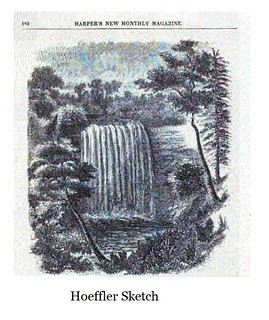 Also in 1852, landscape artist Adolph Johann Hoeffler (1825-1898) came up river to visit the falls. His narrative and sketches were published as
Also in 1852, landscape artist Adolph Johann Hoeffler (1825-1898) came up river to visit the falls. His narrative and sketches were published as Sketches on the Upper Mississippi
in Harper's New Monthly Magazine in July 1853.
The publication in a mass-circulation magazine would have brought the falls to the attention of more people than the Hesler daguerreotype with limited distribution.
I enjoyed Hoeffler's comments on Indian names.
The Indians, in their exquisite appreciation of nature, have given this water-fall the appropriate name of Minnihaha, or The Laughing Waters, but utilitarian, egotistical white man calls it Brown's Falls! In the name of common sense and all that is poetic and pleasing in human nature, let us solemnly protest against those desecrations which rub out our beautiful lakes, rivers and cascades, of their charming and significant Indian names and no longer allow every Brown, Smith, Snooks and Fizzle, who happens to be the first to see some beautiful creation of nature, with dull eyes which have no appreciation for any thing more sentimental than a lump of copper or lead, a buffalo hide or a cat-fish, to perpetuate his cognomen at the expense of good taste and common honesty.
White translation of Indian words often suffers from misidentification and misinterpretation. The Dakota phrase minne
translates as water and is used in Minnesota place names like Minneapolis, Minnehaha, and Minnetonka. One translation of the Dakota minnehaha
is falling water or waterfall. The Dakota used it for both the Brown's Falls and the Falls of Saint Anthony.
Some writers think that haha is a laugh and say minnehaha meant laughing waters. This was not correct. It is also not correct to say that the Indians called it Minnehaha Falls. That would be like saying they called it Waterfall Falls. It is likely the Dakota did not use the name Minnehaha Falls before Longfellow wrote his epic poem.
Longfellow used the names Minnehaha and Laughing Water interchangeably for the woman. He set the site of her Dakota village at the Falls of Minnehaha.
I can imagine a scenario where a bank president would meet with a salesman from the American Bank Note Company. The salesman would show samples of vignettes that were available and the president would select what appealed to him. The vignettes might have had a local connection or might be totally unrelated.
Was the image of the falls promoted as related to The Song of Hiawatha? Would the bank president know that? That part of the story remains unknown. Perhaps this example could lead to a larger discussion of landmarks that appear on National Bank Notes.
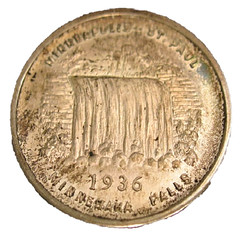 Finally, I want to put in a plug for my local coin club and show the medal the club produced in 1936. There are no fictional Indians on the medal.
Finally, I want to put in a plug for my local coin club and show the medal the club produced in 1936. There are no fictional Indians on the medal.
John Ferreri writes:
"Nice to have more information! I've been pondering that date of mine, he mentions. I don't know where that came from, obviously incorrect!"
To read the earlier E-Sylum article, see:
HIAWATHA-MINNEHAHA BANKNOTE VIGNETTE
(https://www.coinbooks.org/v25/esylum_v25n08a25.html)
DENNIS THE MENACE NUMISMATICS
Mike Kodysz submitted this article on numismatics in episodes of the old Dennis the Menace television show. Cool - thanks! -Editor
To Howard Berlin's list of TV episodes with coin plots, I would like to add three episodes of Dennis the Menace.
However, it would be more accurate to call these episodes numismatic," because two are about coins and one is about paper money.
Spoiler alert: in all three episodes Dennis's neighbor, the hapless Mr. Wilson, gets arrested.
Dennis' Penny Collection,
1961
Dennis's father finds a 1911 Lincoln head
cent in his pocket change. He gives it to Dennis to encourage his son to
start a penny collection. They enlist the help of Mr. Wilson, a knowledgeable coin collector, who gives Dennis some
Whitman folders.
Several misadventures result from Dennis's attempt to fill all the holes in his folders, such as bothering the local grocer by asking him for penny rolls. In the end, Mr. Wilson gets arrested while stopping Dennis from trying to break inside an armored vehicle to look for pennies.
To watch the complete episode, see:
Dennis The Menace - S02E14 - Dennis' Penny Collection
(https://www.youtube.com/watch?v=KfdkkfmzO3g)
The Treasure Chest,
1962
Dennis and Mr. Wilson attend an auction where Mr. Wilson spends $50 to buy an antique seaman's chest
with
missing key and unknown contents. Later in his garage, Mr. Wilson tries unsuccessfully to open the chest. When Mr.
Wilson is away, Dennis picks the lock and finds only a spyglass, hat, and an old captain's coat,
all apparently
worthless. Planning to entice his friends to pay him for a peek inside the chest, Dennis draws a treasure map, folds it
up, and stuffs it into the pocket of the coat. Later, Mr. Wilson finds the map, and thinking that it's genuine, gathers
investors to fund an expedition to find the buried treasure.
Mr. Wilson looks foolish when Dennis interrupts the investors' meeting and tells them who drew the map. Suffering
from a terrible shock,
Mr. Wilson allows Dennis to take the contents of the chest to show his friends. But when
Dennis lifts the coat the lining tears, and bundles of paper notes tumble out onto the floor! The excited Mr. Wilson
declares them to be old-fashioned currency.
After Mr. Wilson uses the cash to pay his debts and cover the cost of
the chest, he's arrested by the local police sergeant for passing stolen money.
To watch the complete episode, see:
Dennis The Menace - S03E28 - The Treasure Chest
(https://www.youtube.com/watch?v=bbsF8jJQOTQ)
A Quiet Evening,
1962
Mr. Wilson plans to spend a quiet evening at home enjoying his favorite pastime,
coin collecting. But his plan is
interrupted when his wife Martha commits him to babysitting Dennis and friends.
Mr. Wilson is proud of his new, valuable 1919-D dime
that he says is worth $100. After Mr. Wilson shows his dime
to the children, Dennis's younger friend Seymour borrows
it to buy candy from a vending machine. Mr. Wilson
breaks into the machine to retrieve his dime, but the entire inventory of dimes spills onto the ground. As Mr. Wilson
sorts through the pile of dimes looking for his 1919-D, a policeman arrests him for stealing.
A close-up shot of the 1919-D dime
shows not a winged liberty (Mercury) type as it should be, but a 1913 Barber
dime. The coin has been heavily circulated, so even if it were an actual 1919-D it would have been worth a lot less
than $100. $100 in 1962 is equal to around $930 today, but a worn 1919-D dime on eBay can be had for under $20!
Certainly, the writers meant the 1919-D as a stand-in for the much scarcer 1916-D. Maybe they wanted to avoid the expectation of showing an actual 1916-D dime on screen. But the fact that the prop master decided to show such a mediocre specimen of the wrong design type does contribute to the silliness of the plot.
To watch the complete episode, see:
Dennis The Menace - S03E21 - A Quiet Evening
(https://www.youtube.com/watch?v=kLSGTh20tUo)
I shared this with researcher David Lange, author of Coin Collecting Albums, A Complete History & Catalog: Volume Three, Whitman Publishing Company Folders and Albums 1940-1978 . -Editor
Dave writes:
"Yes, coin collecting was all over the popular media between 1960 and 1966. The folder Dennis is holding in the first photo is from Whitman's Third Edition (1959-64). The title is LINCOLN HEAD CENT / COLLECTION STARTING 1941 / NUMBER TWO. It is one of two possible Lange varieties: W1¢E3a or W1¢E3b, depending on whether the mint sequence is P-S-D or P-D-S, respectively (the transition occurred during 1960-61).
"The image mismatch in which a 1913 Barber Dime stands in for a 1919-D Mercury Dime would be repeated in the series My Three Sons. There's a 1966 episode in which youngest son Ernie (played by Barry Livingstone) is collecting pennies and is especially proud of his rare 1914-D specimen. When older brother Chip (played by Barry's real-life brother, Stanley) needs some change to pay the paper boy, he takes it from a pile of pennies left lying on a nearby table. You guessed it---among the seized coins was Ernie's prized 1914-D, or so Ernie believes when he can't find it. Only later does he stumble across the missing rarity on his bedroom floor. A close up is inserted of the recovered coin, and the camera clearly reveals an Indian Head Cent. It's likely the producers either didn't know that 1914 cents carry a portrait of Lincoln or simply thought that the audience would not be suitably convinced of the coin's value if they showed a familiar Lincoln Cent that looked just like the coins still in production.
"The popular coin message boards include several old threads describing television shows and movies that include coin themes or simply shots of now-old coins that were still circulating at the time. I've posted new entries to these messages myself on several occasions."
Dennis Tucker of Whitman Publishing writes:
"Delightful numis-hijinks! From time to time Hank Ketcham also depicted Mr. Wilson in the act of coin-collecting in the comic strip. If anyone is interested in the history of Dennis the Menace
and the life of its creator, I recommend his autobiography, The Merchant of Dennis.
"
To read the earlier E-Sylum articles, see:
NEW BOOK: COIN COLLECTING ALBUMS, VOLUME THREE
(https://www.coinbooks.org/v23/esylum_v23n25a03.html)
NOTES FROM E-SYLUM READERS: FEBRUARY 20, 2022 : TV Episodes with Coins in the Plot
(https://www.coinbooks.org/v25/esylum_v25n08a09.html)
MORE TELEVISION AND MOVIE NUMISMATICS
Regarding television episodes with coins in the plotline, Bob Fritsch writes:
"One of my favorites was an episode of the 1958 series Yancy Derringer starring Jock Mahoney and X Brands. Loot from Richmond
centers around smuggling the Confederate Treasury consisting of thousands of Confederate Half Dollars in Yancy's riverboat. The episode can be seen at
https://www.imdb.com/title/tt0825214/?ref_=ttep_ep7. You will have to watch the show to see what happened to the coins."
Thanks! Check it out, folks. -Editor
Bob adds:
"On rewatching the episode, Pahoo is wearing a large medal around his neck. Could it be an Indian Peace Medal? Which one?"
Veering from television to movies, Rick Lank writes:
"Sahara
is a film adaptation of the book by Clive Cussler, starring Matthew McCaughey (2005). It starts out with a bang
when Richmond fell in 1865 and an iron-clad ship makes it away with Confederate gold and ends up (forgotten) in the Sahara Desert, with plenty of Hollywood shenanigans taking place across Africa.
"A single fantasy CSA $20 coin begins the fantastic search, with McConaughey going through many improbable adventures and getting the girl
in the end...
"Here is the coin that Hollywood cooked up for the movie."
To read the complete article, see:
Confederate $20 gold coin sparks treasure hunt in Africa
(http://www.brianrxm.com/comdir/cnsmovie_sahara.htm)
Continuing with the movie theme Ted Puls writes:
"Although modern movies have presented U.S. coins of rarity and value, the best coin was from "The Mysterious Mr. Wong", 1935 movie with Bela Lagosi. He needed the last of the "12 coins of Confucious". This Chinese coin was desired, not for the retail value but so he could have something even more: "ultimate power". The coin was lost and found and stolen. I am not sure who has it today, but I would like to acquire it as I already have the other eleven :-)"
The world will bow down to the all-powerful numismatist!! -Editor
To read the earlier E-Sylum article, see:
NOTES FROM E-SYLUM READERS: FEBRUARY 20, 2022 : TV Episodes with Coins in the Plot
(https://www.coinbooks.org/v25/esylum_v25n08a09.html)
Brian Healy writes:
"I have been reading The E-Sylum for many years and saw in the Volume 25, Number 08, February 20, 2022 issue the section entitled "TV Episodes with Coins in the Plot".
"Thank you for the information on the "Hart to Hart" episode. Although I have been a fan of Stefanie Powers since I saw her in the film "Experiment in Terror" and watched many "Hart to Hart" programs, I somehow missed this one.
"I watched the "Hart to Hart" program which had a pretty good story about the theft of a fictional 17th century rare coin called the "Belleza Chalice". The prop coin playing the rare coin was copied from a modern Vatican coin but modified for the program.
"I have had a personal hobby website for some time with two sections:
Coins in Movies:
https://www.brianrxm.com/comdir/cnsmovie.htm
Coins in Television:
https://www.brianrxm.com/comdir/cnsmovtv.htm
"The E-Sylum Volume 22, Number 30, July 28, 2019 mentioned my website and the "Perry Mason - The Case of the Wooden Nickels" episode."
You're welcome. Check out his sites. -Editor
To read the earlier E-Sylum article, see:
THE CASE OF THE WOODEN NICKELS
(https://www.coinbooks.org/v22/esylum_v22n30a16.html)
NOTES FROM E-SYLUM READERS: FEBRUARY 27, 2022
More on Cataloguing Those 2021 Dollars
Dave Lange writes:
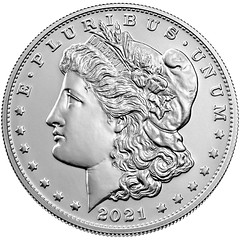 "Dennis Tucker's article about where to place the 2021 Morgan and Peace Dollars within the Red Book recalls a similar debate at NGC. Among my jobs there is creating the data numbers for USA coins, and in recent years that's been quite a task with so many new issues coming out from multiple mints and with multiple finishes. When it was time to produce numbers for the centennial dollars so that our Marketing Department could generate mock-up labels, I suggested that collectors of vintage Morgan and Peace Dollars would be big buyers and would naturally want the new coins to appear as a continuation of those series. After a brief discussion this plan was approved, and I created and sorted the numbers following the last original issues for their respective series.
"Dennis Tucker's article about where to place the 2021 Morgan and Peace Dollars within the Red Book recalls a similar debate at NGC. Among my jobs there is creating the data numbers for USA coins, and in recent years that's been quite a task with so many new issues coming out from multiple mints and with multiple finishes. When it was time to produce numbers for the centennial dollars so that our Marketing Department could generate mock-up labels, I suggested that collectors of vintage Morgan and Peace Dollars would be big buyers and would naturally want the new coins to appear as a continuation of those series. After a brief discussion this plan was approved, and I created and sorted the numbers following the last original issues for their respective series.
A few months later the subject was brought up again, and it was the view of the marketing folks that customers preferred to see them listed separately. I suspect that this challenge came from those having NGC Registry sets of Morgan and Peace Dollars and who were not interested in adding the new pieces to make their sets complete again. The decision was thus made to move the new coins out of the Morgan and Peace data summaries and into one we've been using for several years titled Anniversary Coins and Medals. This is where things such as the American Liberty coins and medals go, along with the 2009 Ultra High Relief St. Gaudens Double Eagle and other pieces that defy exact categorizing. Since the U. S. Mint has been hinting that the new Morgan and Peace Dollars will become annual editions, I suspect they may get their own categories within the NGC Census at some point."
Thanks for the great background. Classification is a tricky business. While the basics can be straightforward, the real world is always throwing curve balls, producing variants that could fit under multiple headings, leading to sometimes difficult tradeoffs. -Editor
To read the earlier E-Sylum article, see:
WHERE TO CATALOG THOSE 2021 DOLLARS?
(https://www.coinbooks.org/v25/esylum_v25n08a11.html)
On the Fraser Eagle Reverse
Dave Lange adds:
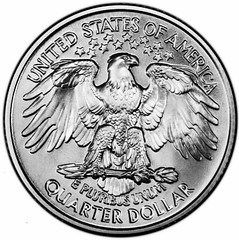 "On a somewhat related matter, I'd like to comment on Wayne Pearson's suggestion that quarter dollars featuring the Fraser eagle reverse be added to the Mint's roster alongside the American Woman Quarters. I would amend his suggestion to reserve that design for when the current quarter program is concluded in four years' time. It would be nice to see both sides of Fraser's models used for a regular issue quarter dollar going forward.
"On a somewhat related matter, I'd like to comment on Wayne Pearson's suggestion that quarter dollars featuring the Fraser eagle reverse be added to the Mint's roster alongside the American Woman Quarters. I would amend his suggestion to reserve that design for when the current quarter program is concluded in four years' time. It would be nice to see both sides of Fraser's models used for a regular issue quarter dollar going forward.
Of course, this assumes that there won't be yet another themed series of quarters to tie up the reverse of this coin for several years further. It's rumored that there's a proposed series of quarters honoring Congressmen who amass the greatest tax funds for their home states. This is to be called the American Pork series."
Everybody's a comedian. Better than everybody being a politician. There'd be no one left to tax! But I like Dave's suggestion - it would be nice to have a respite from the circulating commemoratives, but this juggernaut could be hard to stop. Everybody loves it when their pet design is chosen, and who could blame them? And while many of the designs are uninspiring, many are also quite worthy of the ages. -Editor
To read the earlier E-Sylum article, see:
LAURA GARDIN FRASER EAGLE DESIGN
(https://www.coinbooks.org/v25/esylum_v25n08a07.html)
1922 High Relief Proof Peace Dollar Presentation
Michael Wehner writes:
"Doug Ward's excellent presentation at the Pacific Coast Numismatic Society of the high relief double deuce Peace dollars can be viewed on YouTube. I highly recommend it."
Thanks! Check it out. -Editor
To watch the presentation, see:
Double Deuce High Relief Proof Peace Dollar
(https://www.youtube.com/watch?v=KRUdeYr4zvQ)
To read the earlier E-Sylum article, see:
THE DOUBLE DEUCE PROOF PEACE DOLLAR
(https://www.coinbooks.org/v25/esylum_v25n08a08.html)
The Second Spingarn Medal
Rex Stark writes:
"I read with interest the article on the NAACP Spingarn medals. While the several prices quoted might seem quite low, a significant factor is that the modern medals are essentially cheap imitations of the early issues. At the close of the article it notes that "the earliest examples were likely gold". This is in fact true.
"In the summer of 2011 I purchased (at Cowan's) the second Spingarn medal issued, given in 1916 to Colonel Charles Young, who at the time was the highest ranking colored soldier in the U. S. military. I paid $7600 at Cowan's, and offered it in my own catalog a few months later. It sold instantly for $9750 to a well-known institution."
Solid gold Spingarn Medal, awarded annually since 1915 by the NAACP to one person a year for outstanding achievement by an African American. Created by Joel Elias Spingarn, Chairman of the NAACP. This is the second medal awarded (in 1916), to Colonel Charles Young. In 1916 Young was the highest ranking colored soldier in the US military. Born to slave parents in 1864, he graduated from West Point in 1889, and was later military attache to Haiti and Liberia. Additional biographical info included. This medal is 14K and weighs 5.6 ounces, so the value of the gold alone is over $5400. Size 2 1/2 (64mm),in original fitted case of issue. I have never seen another Spingarn medal for sale. 9,750.
Glad this found a good home. Rex kindly provided the above image and description from his catalog #71. Thanks! -Editor
To read the earlier E-Sylum article, see:
MAYA ANGELOU AND THE SPINGARN MEDAL
(https://www.coinbooks.org/v25/esylum_v25n08a06.html)
More on M.C. Lilley & Co.
Dave Schenkman writes:
"I've seen quite a few dies such as these on eBay over the years. Some types are more collected than others. In the 1960s thousands of old trade token dies from a Philadelphia die sinker (Quint) came on the market. I purchased the Virginia token dies.
"Quite a while back Dave Gladfelter wrote a good article on the Quint company."
Julia Casey writes:
"I have heard of this company because I like to visit metal detecting forums and help identify dug finds. Items with the Lilley name come up often."
Carol Bastable writes:
"I looked through the M.C. Lilley listings again and found some printing blocks of the company's factory. They may have been used for advertising or on letterheads and company documents. The three blocks differ in size. These are great finds for historians and perhaps people that place competitive tokens/medals exhibits at coin shows."
Nice. Thanks. -Editor
To read the earlier E-Sylum article, see:
M. C. LILLEY & COMPANY
(https://www.coinbooks.org/v25/esylum_v25n08a10.html)
More on the First American Coin Collector Medal
"You asked if anyone has examples of the First American Coin Collector medal. I don't have one, but in the last few months, I've seen two for sale on Ebay. The first was several months ago. I researched but didn't buy that example. As I recall, I matched the name engraved on the piece, which was an unusual one, to someone who lived near Richmond. I've forgotten his name but do recall that the medal took a while to sell and that the seller reduced the price considerably before someone purchased it as a Buy It Now. There currently is an example, engraved with the name Vernon M. Jepson, open for bidding on eBay.
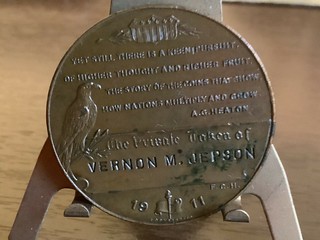 "I did a small amount of research on Vernon M. Jepson using Familysearch.org and found one good match - a Civil War veteran, born in 1843, who initially lived in the Worcester, MA area but in the early 20th century moved to Connecticut and finally to Osceola, FL where he died in 1932. He was described as a florist in the 1880 Census but later became a carpenter. In what little research I did, I found nothing to link him to numismatics."
"I did a small amount of research on Vernon M. Jepson using Familysearch.org and found one good match - a Civil War veteran, born in 1843, who initially lived in the Worcester, MA area but in the early 20th century moved to Connecticut and finally to Osceola, FL where he died in 1932. He was described as a florist in the 1880 Census but later became a carpenter. In what little research I did, I found nothing to link him to numismatics."
Thanks. Glad to know there are some more examples. -Editor
To read the complete eBay lot description, see:
1911 First American Coin Private Collector #121 Bronze Medal 38mm.
(https://www.ebay.com/itm/384466331739)
To read the earlier E-Sylum article, see:
THE FIRST AMERICAN COIN COLLECTOR MEDAL
(https://www.coinbooks.org/v25/esylum_v25n08a14.html)
Reading The E-Sylum on the Web
Mark Lovmo writes:
"I am a fan of the newsletter, but I have not been able to see the images attached to the newsletter for a year now. Is there something that I should do to be able to see the images?"
I responded: Between the table of contents and Wayne's Words is a grey box with links including this one: Click here to read this issue on the web.
Follow the link and let me know if you can see the images there. That's one option.
Everyone's email reader is different. Some will suppress images from the web and you have to find and click a link that says something like "Show images" or "This looks OK" to tell it you don't think it's spam. It's usually at the top or bottom of the email. -Editor
Mark adds:
"I will use the web version from now on. Thanks for the "pro tip"!"
Thanks are due our webmaster Bruce Perdue, who formats and posts the full issue each Sunday night before sending out the email blast. When my work ends, his is just beginning. We couldn't keep this train on the tracks without his tireless assistance. -Editor
More on the Engraved Dollars
Jerome Nashorn writes:
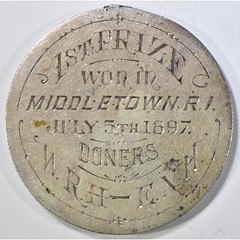 "As one who particularly collects and researches inscribed medals, I read the articles on the engraved Morgan and Flowing Hair dollars with great interest. My views on the attributions are as follows. I think the attribution of the engraved Morgan is right on point. Even though Ms. Casey only had initials to go on, she also had the place name of a relatively small locality (even today, Middletown RI has fewer than 20,000 people) as well as a date and the newspaper article she was able to locate clearly matches the initials on the piece to people who lived in Middletown in that era. US Census records for 1900 and 1910 available on Familysearch.org confirm her findings. They identify Hunter as a farmer living in Middletown who was born in 1857 and had a wife named Edith. He was apparently fairly wealthy since his household in 1900 included four servants. And Sunnyfield Farm was bought in the 1920s by a wealthy New Yorker so it presumably was a substantial residence.
"As one who particularly collects and researches inscribed medals, I read the articles on the engraved Morgan and Flowing Hair dollars with great interest. My views on the attributions are as follows. I think the attribution of the engraved Morgan is right on point. Even though Ms. Casey only had initials to go on, she also had the place name of a relatively small locality (even today, Middletown RI has fewer than 20,000 people) as well as a date and the newspaper article she was able to locate clearly matches the initials on the piece to people who lived in Middletown in that era. US Census records for 1900 and 1910 available on Familysearch.org confirm her findings. They identify Hunter as a farmer living in Middletown who was born in 1857 and had a wife named Edith. He was apparently fairly wealthy since his household in 1900 included four servants. And Sunnyfield Farm was bought in the 1920s by a wealthy New Yorker so it presumably was a substantial residence.
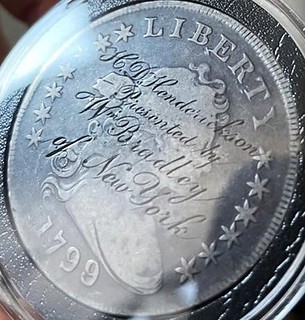 "When it comes to the Flowing Hair dollar, Ms. Casey's suggested attribution is possible. But the link between William Bradley, the wealthy builder, and either Henry Hendrickson is speculative in my opinion. Possible but not probable and definitely far from certain. Unfortunately, the medal contains very little information to work with. The donor had a fairly common first and last name (Trow's 1863 NYC Directory, covering Manhattan only, includes ten William Bradleys). The recipient's surname is much less common but hardly unique and it is not even certain whether Hendrickson was male or female. The only date present is the date the host coin was struck so the engraving could have been done at any time in the 19th or early 20th Centuries.
"When it comes to the Flowing Hair dollar, Ms. Casey's suggested attribution is possible. But the link between William Bradley, the wealthy builder, and either Henry Hendrickson is speculative in my opinion. Possible but not probable and definitely far from certain. Unfortunately, the medal contains very little information to work with. The donor had a fairly common first and last name (Trow's 1863 NYC Directory, covering Manhattan only, includes ten William Bradleys). The recipient's surname is much less common but hardly unique and it is not even certain whether Hendrickson was male or female. The only date present is the date the host coin was struck so the engraving could have been done at any time in the 19th or early 20th Centuries.
"Likewise, there is no indication on the coin as to why it was given to Hendrickson or what relationship the donor had to the recipient (employer to employee, teacher to student, friend to friend, aunt or uncle to nephew or niece, grandfather to grandchild, etc.). . Perhaps with a huge amount of research, checking 19th Century census records, city directories, county histories, newspapers, and other resources for the entire state of New York, and even adjacent states, someone might be able to at least narrow things down if he or she found a William Bradley who lived in the same place as an H.D. Hendrickson and at roughly the same time. A difficult if not impossible task.
"Admittedly, I'm very conservative when it comes to attributing awarded/engraved medals but in my opinion, to be fairly certain of an attribution, one typically needs an exact name (and preferably one that is not very common), a specific place of residence, and a date as well as other information to tie the medal to someone specific, such as an occupation, college or school affiliation, or membership in a fraternal organization. Having an approximate date of birth is also extremely helpful and often essential. (School medals can often be attributed since one can usually estimate a birth date based on the year the medal was awarded, which usually is on such medals ) This level of data is typically missing on engraved coins but is often found on struck award medals, such as the medals given as prizes at annual exhibitions held by agricultural and mechanical societies. Even with award medals, researching the recipient can be difficult. When researching such medals, I've often found several people with the same name who lived in the same place at the same time who conceivably could have been a medal's recipient."
Julia Casey writes:
"I agree with Mr. Nashorn's comments! It should be noted that is why I premised my attribution by stating it was "my guess." Though I continue to support the "Wm Bradley of New York" to be the individual I highlighted. If it wasn't apparent by my post last issue, I did a real "deep-dive" into this William Bradley's biography and there was much minutiae that I could not put into my reply. However, suffice to say, he seems very much like a man that would refer to himself this way.
"Regarding this aspect. -- "Perhaps with a huge amount of research, checking 19th Century census records, city directories, county histories, newspapers, and other resources for the entire state of New York, and even adjacent states, someone might be able to at least narrow things down if he or she found a William Bradley who lived in the same place as an H.D. Hendrickson and at roughly the same time."
"I agree! And this is exactly what I did. The William Bradley and H.D. Hendrickson, Jr. mentioned were both living in New York City in the early 1900s. The 1905 New York State Census shows William Bradley at 320 West 86th Street and Henry D. Hendrickson, Jr. at 340 West 40th Street in Manhattan. Hendrickson is indexed as "Henry B. Hendricksen" but I used other records to match him to be the same man I wrote about last week.
"However, this all does remain "my guess.""
Thanks, everyone! -Editor
To read the earlier E-Sylum article, see:
NOTES FROM E-SYLUM READERS: FEBRUARY 20, 2022 : Middletown, RI Dollar Prize Medal Attribution
(https://www.coinbooks.org/v25/esylum_v25n08a09.html)
NOTES FROM E-SYLUM READERS: FEBRUARY 20, 2022 : Engraved Draped Bust Dollar
(https://www.coinbooks.org/v25/esylum_v25n08a09.html)
RESEARCHING THE FRED RAUCH ENGRAVED HALF
Engraved Draped Bust Half Dollar
Dave Lange writes:
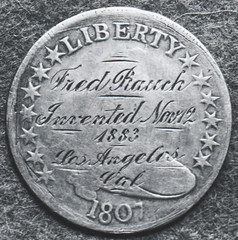 "This photo shows an engraved Draped Bust Half Dollar from my collection that compliments the similar silver dollar illustrated in The E-Sylum. This coin came to me with a blob of solder at the center of its reverse, indicating that it had been mounted as a pin or something similar. I sent it to Allen Stockton to have the solder removed (he advertises in The Numismatist), and he did a nice job with it.
"This photo shows an engraved Draped Bust Half Dollar from my collection that compliments the similar silver dollar illustrated in The E-Sylum. This coin came to me with a blob of solder at the center of its reverse, indicating that it had been mounted as a pin or something similar. I sent it to Allen Stockton to have the solder removed (he advertises in The Numismatist), and he did a nice job with it.
In the 1980s I attempted to determine who Fred Rauch was and what he invented, but I could find no patent under that name. Of course, this was before the internet, and I had to go in person to an institutional library that had gigantic patent ledgers nicely bound in leather. Recently I spent some time on Ancestry.com attempting to isolate which of the many Angelenos named Fred Rauch was the one commemorated on my coin, but this was similarly unsuccessful."
Interesting. I reached out to a couple E-Sylum regulars for help. -Editor
Steve Bishop writes:
"I had no luck. I looked for patents issued in 1833 and 1883, as I think the engraved date could be either one. Personally, I think 1833 is more likely, else the engraver would have used a more contemporary coin. Furthermore, U.S. patents are traditionally issued on only one day a week, Tuesday. Nov. 12, 1833 is a Tuesday; November 12, 1883 is not, and at least one patent was issued on November 13, 1883. The only inventor named Rauch anywhere close was in 1923. I'm sure there were patents issued on that particular date in 1833, but the only comprehensive list I could find for patents issued in 1833 did not include any issued to any inventor named Rauch.
"There was a fire at the Patent Office in 1836 that destroyed many records, and the reconstructed records have gaps. Notably, the list I found has a gap between September 23, 1833 and November 19, 1833. Figures.
"The only Fred Rauch I found from that time period is Frederick Augustus Rauch, Founding President of Marshall College in Pennsylvania."
Julia Casey writes:
"I found Dave Lange's article about his search on the NNP and it appears like he was directed to the same man. It is a fun read!"
"I found a listing that shows Fred. Rauch
of Los Angeles was awarded a premium in 1884 by the Sixth District Agricultural Association.
The publication is accessible on Google Books within the Appendix to the Journals of the Senate and Assembly of the Twenty-Sixth Session of the Legislature of the State of California, vol. II (1885).
"Rauch is listed as receiving a diploma
in the mechanical arts category for his exhibit of Two Whalebone Chairs.
"Perhaps Dave Lange's engraved half dollar is a premium award?
"My first inclination was that a whalebone chair
was a sort of bent wood, but when I investigated it, I found that it was a known art during this time to make chairs out of whale bone. They are sought after and valuable today.
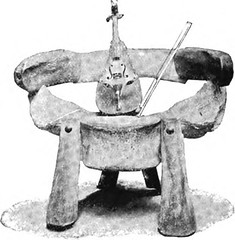 "Here is an image of a whalebone chair made by the famed California mountain man and chair maker, Seth Kinman (1815-1888). This chair was exhibited at the 1893 World's Columbian Exposition in Chicago.
"Here is an image of a whalebone chair made by the famed California mountain man and chair maker, Seth Kinman (1815-1888). This chair was exhibited at the 1893 World's Columbian Exposition in Chicago.
"I traced Fred Rauch born c. 1852 in Texas and died May 23, 1935, in Minneapolis, Minnesota. Frederick Rauch appeared in the Los Angeles city directories in the 1880s until 1900. From the listings I saw he is shown employed as a Butcher,
except in the 1895 directory where he is a Cornice Maker.
Rauch posted a classified ad in the 9/27/1908 Minneapolis Star-Tribune for work as a good meat cutter and sausage maker.
Apparently, he was a man of varied talents! "
Link to the whalebone chair image:
https://commons.wikimedia.org/wiki/File:1893
_violin_on_whale_bone_chair_World%27s_fair.jpeg
Link to the listing of Fred Rauch's exhibit:
https://books.google.com/books?id=5jRNAAAAYAAJ&pg=RA1-PA385
&dq=%22rauch%22++%22los+angeles%22&hl=en&newbks=1&newbks
_redir=0&sa=X&ved=2ahUKEwiZkKKMgJL2AhU8knIEHTpNAPEQ6AF6BAgFEAI#v
=onepage&q&f=false
More on Seth Kinman:
https://en.wikipedia.org/wiki/Seth_Kinman
Some mysteries just keep on mystifying. But for those who persevere there are multiple ways to tackle these questions. -Editor
Julia adds:
"I mentioned to Neil Musante that I was working on this piece. He said his first inclination was that "invented" was a humorous way of saying that someone was born on that date, or it was a reference to the 1807.date on the half dollar. I searched this angle to make a connection but I didn't have any luck.
"The ancestry.com listings for Fred Rauch keep connecting him with a "Horn" family in Texas. I still don't know what exactly happened but I got the impression his mother may have remarried to a man named Horn. The early census records are confusing because there is a Frederic Horn indexed with this family, but the birthdate is a little off. I do know for certain he is connected to this Horn family though because I found an obituary for a woman whose maiden name was Horn and it identifies him (as Fred Rauch) as her brother and she shows on the census records in the same family.
"The 1883 date would have been about the time this Fred Rauch / Frederic Horn moved to Los Angeles. I wonder if "Invented" signifies that the move to LA is when he decided to change his name and start using Fred Rauch."
All interesting options. Thanks, everyone. Original numismatic research is hard, but can be fun and interesting as well. One never quite knows where the path will lead. -Editor
To read Dave's 1993 Calcoin News article, see:
THE NUMISMATIC LEGACY OF FRED RAUCH
(https://archive.org/details/calcoinnews47n2cali/page/36/mode/2up)
To read the earlier E-Sylum article, see:
NOTES FROM E-SYLUM READERS: FEBRUARY 20, 2022 : Engraved Draped Bust Dollar
(https://www.coinbooks.org/v25/esylum_v25n08a09.html)
MORE ON THE DEUTSCHLAND BALLAST RELIC MEDAL
Trey Todd of San Antonio, TX writes:
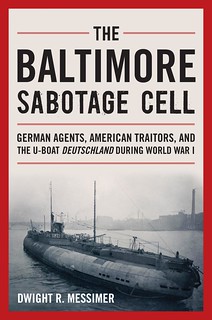 "The best overall reference on the U-Deutschland, including an appendix on U-Deutschland artifacts, is to be found in Dwight R. Messimer's The Baltimore Sabotage Cell: German Agents, American Traitors, and the U-Boat Deutschland during World War I, 2015, Naval Institute Press. Copies of this book are readily available online, and likely not expensive. There were a number of artifacts made from the ballast of the merchant submarine, and Mr Conway's appears to be one in very nice condition."
"The best overall reference on the U-Deutschland, including an appendix on U-Deutschland artifacts, is to be found in Dwight R. Messimer's The Baltimore Sabotage Cell: German Agents, American Traitors, and the U-Boat Deutschland during World War I, 2015, Naval Institute Press. Copies of this book are readily available online, and likely not expensive. There were a number of artifacts made from the ballast of the merchant submarine, and Mr Conway's appears to be one in very nice condition."
Thanks! Whatever it is, don't be surprised if someone's already written a book about it! -Editor
Harry Waterson writes:
"Russ Sears published the story of the ballast medals in the Fall 2007 issue of the Maryland TAMS Journal."
Thanks! Russ' article mentions another book, Voyage of the Deutschland by Captain Paul Koenig. Published in 1915, the book is available in both English and German. -Editor
Harry adds:
"I think Russ Sears may have gotten the publication year wrong for Koenig's book. The voyage was not made until 1916."
Correct - I checked, and it was published in 1916. -Editor
To read the complete article on NNP, see:
https://nnp.wustl.edu/library/book/519497
To read the earlier E-Sylum article, see:
NOTES FROM E-SYLUM READERS: FEBRUARY 20, 2022 : Query: Deutschland Ballast Relic Medal
(https://www.coinbooks.org/v25/esylum_v25n08a09.html)
THE 1909 ANA ELECTION BLANK PROXY
BALLOTS
Doug Ward submitted this piece on the 1909 American Numismatic Association election Blank Proxy
allegation. Thanks!
-Editor
Blank ProxyAllegation from the 1909 ANA Election
The recent removal of Farran Zerbe's name from the ANA's service award was based on a number of accusations. One of these, that he committed fraud during the 1909 ANA election, has made the rounds in various forms, including his intended use of blank proxies. Although no evidence for any of the allegations has ever been provided, it's possible that a misconstrued term used in subsequent backbiting could explain the ‘blank proxies' charge.
In February of 1908, ANA Local Secretary Mr. Frank G. Duffield's article Shall Our Proxy System Be Abolished?
was published in The Numismatist[1]. His question is more provocative than accurate, possibly to elicit a more energetic response from ANA membership. He actually questioned the proxy system, rather than the use of proxies. Specifically, he argues against the use of blank proxies
, or those where votes for officers were left blank.
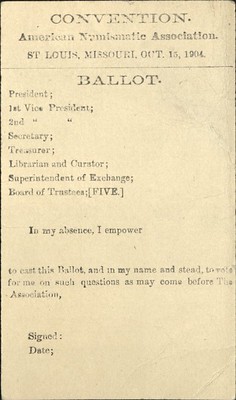 Curiously, it's not the specific changes he suggests that are intriguing. It's the definition of the term
Curiously, it's not the specific changes he suggests that are intriguing. It's the definition of the term blank proxy
that is important. Without proper context the term suggests a proxy left blank – devoid of a member's name as well as any votes for officers. If filled in with a member's name and votes, the use of such a ballot and proxy would constitute fraud.
However, it seems a blank proxy
could also be a ‘ballot' from a member who simply left their vote for all officers blank.
This was Mr. Duffield's definition and likely the understanding of the general ANA membership at that time. The intent may have been to withhold their vote for officers and confer their vote on other matters that arose at the convention to the proxy's holder. In this context a blank proxy
or ballot was legitimate. Illegitimacy might be implied if any votes for officers were later filled in by the proxy's holder. However, in 1909 the ANA Constitution and By-Laws did not prohibit this during the convention.
A blank proxy-ballot used in 1909 could not be found. However, one from 1904 is shown as an example. It's presumed they were similar, since no relevant changes were made to voting requirements in the ANA Constitution revision of 1907. In 1909, the proxy-ballot could be mailed to the Secretary General or given to a designated member attending the convention. As a result of the 1909 election controversy, the ANA Constitution was changed to require the listing of nominees and subsequent mailing of the ballot and proxy to the Secretary General. The ballot and proxy used in 1916 are shown as an example.
According to David T. Alexander, Q. David Bowers related that Farran Zerbe had printed and carried 200 blank proxies with him to Montreal,
just in case.
[2] It was asserted that this ‘accusation' was made more than a decade later during the reminiscing of ‘old-timers.' On it's face, it's unclear how completely blank proxies would be used at a convention. An extrapolation of this accusation defies logic and common sense, and would have been a fool's errand with a high likelihood of resulting in documented corruption... Is there any?
Moreover, those remarks might not have been an accusation of wrong doing so much
as an indication of fact – only later becoming a misrepresented, indolent allegation repeated
ad nauseam. Perhaps they were made in lamentation or anger; that the use of blank
proxies
had cost them or their candidate the election in 1909. In any case, the convention
record indicates that Mr. Zerbe possessed 75 proxies, but does not indicate if any of them
were blank.
Everything else is conjecture, opinion or sour grapes.
Special thanks to Akio Liss, Librarian at the ANA's Dwight N. Manley Library, for his help in obtaining copies of the proxy-ballot documents.
[1] Shall Our Proxy System Be Abolished?
, by F. G. Duffield, The Numismatist, 1908, Vol. XXI, No. 2, pages 45 – 48.
[2] Farran Zerbe: Numismatist – Promoter – Hustler
, by David Alexander, Coin Week, September 27, 2016.
See also Doug's article in the Spring 2022 issue of our print journal, The Asylum: "The American Numismatic Association Election of 1909 as Viewed through Its Membership Applications from 1907 to 1910". -Editor
To read the complete article, see:
ASYLUM SPRING 2022 ISSUE PUBLISHED
(https://www.coinbooks.org/v25/esylum_v25n08a02.html)
To read David Alexander's CoinWeek article, see:
Farran Zerbe: Numismatist – Promoter – Hustler
(https://coinweek.com/education/farran-zerbe-numismatist-promoter-hustler/)
HOWARD R. NEWCOMB
A Stack's Bowers article by Dave Bowers highlights author Howard Newcomb. -Editor
My last article about the 1817 N-16 cent reminded me of Howard Rounds Newcomb, a Renaissance man in our hobby.
Born on December 21 1877, Howard R. Newcomb became involved in numismatics as a teenager—the time that many if not most of the "greats" of our hobby got started. In August 1894 Newcomb attended the American Numismatic Association annual convention held that year in his hometown of Detroit, where he signed up to become member #227. He must have forgotten to pay his dues, for in The Numismatist in December 1906 he is listed as new member #92. It was the policy then, soon discontinued, to fill in any open numbers vacated by dropouts with new names given old numbers. On November 12, 1910, he joined the American Numismatic Society, which at the time had been in its magnificent new headquarters on Audubon Terrace, New York City, since 1908.
By then he was an avid collector of coins by varieties—Morgan silver dollars by minute differences and, in a wider field, mintmarked issues of silver coins. The Numismatist in June 1912 included his article, "Unappreciated Silver Mint Rarities-Dimes," which related that everyone knew about the famous 1894-S dime as being the rarest in the series, but that other dimes were also deserving of attention, including the 1874-CC, of which Newcomb knew of fewer than a half dozen specimens. Of the 1871-CC, 1872-CC, and 1873-CC With Arrows, only the 1871-CC was known to Newcomb in Uncirculated condition. Further, the 1885-S dime was identified as a sleeper. The same magazine in February 1913 carried Newcomb's descriptions of the different varieties of 1878-1880 dollars known to him, a pioneering discussion of such topics as the number of tailfeathers in the eagle, the shape of the top arrow feather, and other characteristics which would become familiar to a later generation of collectors.
The April 1914 issue of The Numismatist began with an article on the exhibition of United States coins held at the American Numismatic Society in New York City from January 17 through February 18, 1914, where it was noted that the exhibition included "the rarities of the mintmark collection of Mr. Howard Newcomb." Newcomb continued his study and enjoyment of numismatics, including writing in 1925 The United States Cents of the Years 1801-1802-1803, and in the 1930s publishing information on how to tell original Proof half cents from restrikes. By the late 1920s he resided in the fashionable Bel Air district of Los Angeles, having retired from his Detroit business, Newcomb, Endicott & Co., a large haberdashery and dry goods firm founded in the 19th century.
Newcomb passed away on January 7, 1945, having lived long enough to see his book on late-date large cents in print. In February, The Numismatist included his obituary, "Among Us a Prince Has Fallen," by Carl Wurtzbach. His collection was sold in two auctions by J.C. Morgenthau & Co. (Wayte Raymond and James G. Macallister). In 1982 he was elected to the American Numismatic Association Hall of Fame.
To read the complete article, see:
Howard R. Newcomb
(https://www.stacksbowers.com/News/Pages/Blogs.aspx?ArticleID=howard-newcomb)
COIN ARTIST MICAH ADAMS
Chris Fuccione writes:
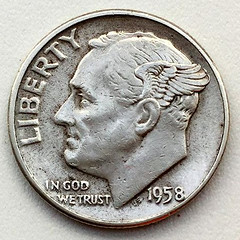 "I saw that article about the "pattern" Roosevelt Dime and my warning bells started to ring. The first thing I thought was why would the Mint use a 1958 date for a coin that the first year of issue was 1946? I then saw the wear on the coin and it looked like it was in circulation for a while. I then went to the Reddit link that you provided and saw that it was produced by coin artist Micah Adams. Here is his Instagram with the coin that he photoshopped:
https://www.instagram.com/p/BxITNKRAHPX/
"
"I saw that article about the "pattern" Roosevelt Dime and my warning bells started to ring. The first thing I thought was why would the Mint use a 1958 date for a coin that the first year of issue was 1946? I then saw the wear on the coin and it looked like it was in circulation for a while. I then went to the Reddit link that you provided and saw that it was produced by coin artist Micah Adams. Here is his Instagram with the coin that he photoshopped:
https://www.instagram.com/p/BxITNKRAHPX/
"
Yep, it was a fake. I found it amusing and very well done. -Editor
Wayne Pearson writes:
"I think that coin would have had more credibility if the creator had used a 1946 dime instead of a 1958. I had to laugh at it too."
Here's more information about Micah's work - some nice stuff. -Editor
Whether we know it or not, each of us carries around miniature artist multiples almost every day. Coins might not be worth much more than the fraction of a dollar stamped to their sides, but they express something about history and design in their finely wrought details.
Artist Micah Adams discovered this eight years ago in the tiny maple leaves on the soon-to-be-discontinued penny. Using a jeweller's saw with a blade a quarter-of-a-millimetre wide, he cut out each one until he created a Lilliputian pile. When the copper was heated, the leaves turned iridescent colours, just like in autumn. He has reassembled the details on our currency in many ways ever since.
His skill at working in a small scale began in the jewellery studio at art school, but the roots of this interest go further back. I would pick little things up off the street when I was younger and keep them in my pocket, like they were precious,
he says. Adams eventually concentrated on coins because he was fascinated, in part, by the mint's graphic decisions, quirks and all.
For example, he discovered that those three pinpoint markings around the caribou head on Canada's quarter were meant to represent something more significant. The designer, Emanuel Hahn, wanted to include the Big Dipper,
he says of the 1937 arrangement. But just these three dots are left.
This inspired Adams to erase the quarter's embossed designs, all but the trio of stars. To help make this intervention even more visible, he recreated the coin in page-sized, ballpoint drawings that look like enlarged rubbings.
To read the complete article, see:
Micah Adams Coins a New Art Form
(https://www.designlinesmagazine.com/micah-adams/)
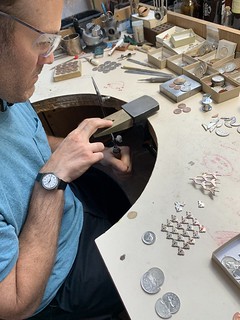 I should have opened my conversation with Micah Adams by offering him a penny for his thoughts. Literally. The Toronto-based jeweler
I should have opened my conversation with Micah Adams by offering him a penny for his thoughts. Literally. The Toronto-based jeweler coined
a new technique by creating pins from maple leaves he carves out of Canadian pennies. "I made some pins from the leaves as presents for friends, and it caught on," he said when asked to explain the origin of his work with coins.
The penny project soon morphed into an ongoing hunt for scrap metal coins at fairs. As his collection grew, Micah began to group them according to their motifs, whether that was flowers or animals. Using a jeweler's saw he then cuts out the shapes that inspire him to create his signature brooches, like the rabbit and Canada Goose pieces he designed from the 1967 centennial coins Alex Colville created. Micah shares Colville's affection for what some would deem to be ordinary. "The main draw with coins were their designs and looking for things I could collage," Micah explained. "I never thought I would focus on coins, but it's 75 percent of my work. It just slowly took over."
I believe it's the role of an artist to bring beauty into our lives, sometimes working with objects that we use every day. Their purpose is to transform ideas into objects and represent these ideas outside pure functionality. It's a sentiment that resonates with Micah.
"[My work is about showing how] to see things in a new light; to see objects in a way that you haven't looked at them before… I want people to recognize where things have come from. I like to use everyday objects. When you realize a piece is made from coins, maybe you start to look at your coins a little bit differently.
To read the complete article, see:
Penny Wise: Micah Adams captures big ideas in miniature pieces made from coins
(https://www.ruepigalle.ca/blog-posts/penny-wise-micah-adams)
For more information, or to order examples of Micah's work, see:
https://www.lapaigallery.com/collections/micah-adams
To read the earlier E-Sylum article, see:
NOTES FROM E-SYLUM READERS: FEBRUARY 20, 2022 : The "Winged Roosevelt" Pattern
(https://www.coinbooks.org/v25/esylum_v25n08a09.html)
JAMES FRASER'S 1952 LINCOLN COIN DESIGNS
Last week Wayne Pearson discussed using the Laura Gardin Fraser eagle design for the reverse of the Washington quarter. Here are his thoughts on her husband James Earle Fraser's 1952 Lincoln Coin designs. Thanks. -Editor
After 113 years of the same Victor D. Brenner design of Lincoln on the one cent coin-it is time for a change. Here is a nice 1952 design by James Fraser.
Fraser also had another design that is more common but less attractive.
The Fraser cent reverse is superior to the shield design we are currently using.
Imagine this as a new one cent combo.
Teddy Roosevelt once called our coins hideously atrocious. I think he would approve of this one.
I don't know about Teddy, but I like it. What do readers think? -Editor
Sources:
Welcome to the Private Collection of Jim & Gayle Halperin
(http://www.jhalpe.com/)
1952 Lincoln Cent
(https://uspatterns.stores.yahoo.net/19lincen.html)
James Earle Fraser pattern 1952 cent...
(https://forums.collectors.com/discussion/728030/james-earle-fraser-pattern-1952-cent)
To read the earlier E-Sylum article, see:
LAURA GARDIN FRASER EAGLE DESIGN
(https://www.coinbooks.org/v25/esylum_v25n08a07.html)
VOCABULARY TERMS: HOT, HOT, HOT!
Here are three hot short entries from Dick Johnson's Encyclopedia of Coin and Medal Terminology. -Editor
Hot Shortness. Cracks around edges of cast blanks (or cast objects) caused by different melting points of impurities. Ancient coins often display evidence of such hot shortness – they were often made of impure metal and the blanks were heated before striking. Low melting point metals, such as lead, were squeezed out during striking leaving the fissures around the edge.
Hot Tear. A separating of metal occurring during any process when the metal is in molten condition as in casting. Foundry workers often call this a "pull." Ragged edges on the end of strips are often the location of hot tears. These very infrequently show up on mint error coins when a planchet is blanked near the end of a strip containing a hot tear and this improper blank is inadvertently struck.
Hot Tin Impression. A method of easily testing a die by impressing it in hot tin; a British term for what Americans would call a splasher. Such was the practice at the Soho Mint and hot tin impressions of their early productions still exist (example: Christ's College Porteus Medal of 1808 by J. Phillip, Brown 632-33). While splashers can be made in any soft metal, hot tin impressions were more popular in England because of the ease of obtaining tin (from the tin mines in Western England). American diesinkers of the 19th century were evenly divided in their choice between tin or lead to prove a die during some stage of manufacturer. Tin is softer than lead but somewhat more expensive. Both metals could be used over and over again. See tin.
To read the complete entries on the Newman Numismatic Portal, see:
Hot Shortness
(https://nnp.wustl.edu/library/dictionarydetail/516066)
Hot Tear
(https://nnp.wustl.edu/library/dictionarydetail/516067)
Hot Tin Impression
(https://nnp.wustl.edu/library/dictionarydetail/516068)
THE BOOK BAZARRE
DON EVERHART'S CAREER IN COINS, PART 5
With permission, we're republishing excerpts of former U.S. Mint Sculptor-Engraver Don Everhart series published by CoinWeek beginning in April 2018. -Editor
During my employment at the Mint I had many designs picked to be coins and medals; in fact, a few of the coins I worked on went on to be chosen as Coin Of The Year (COTY).
Two in particular stand out. The Baseball Hall of Fame curved coin (the first curved coin to be struck by The United States Mint), and the March of Dimes Commemorative Silver Dollar coin.
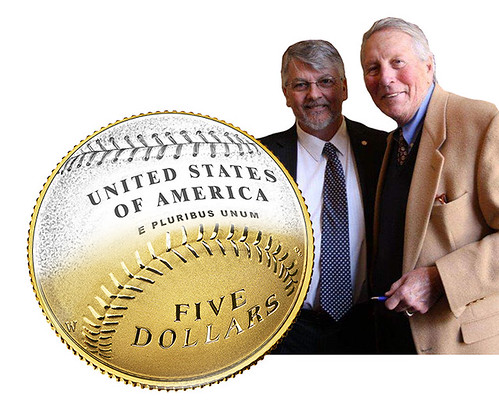
Baseball Hall of Fame Five Dollar Coin (left). Don Everhart and Brooks Robinson (right). Images: United States Mint / Illustration: CoinWeek
The COTY award is given by Krause Publications. Awards are given by a panel of international judges based on design, artistic vision and craftsmanship. All countries are eligible to enter.
The 2014 Hall of Fame Baseball Coin of the Year was awarded on February 6, 2016 in Berlin. The obverse design consisted of an open baseball glove, designed by independent artist Cassie McFarland of California. The design of the obverse was selected through a competition open to all United States citizens.
My reverse was chosen from designs submitted by the Engraving Department at the Mint. I remember being present at the committee meetings. The CCAC had narrowed down the reverse submissions to two designs: Phebe Hemphill's excellent design and mine. Phebe had a strong design, and I thought that it would be selected. In the end, however, mine won out and I was elated, to say the least.
As a child, growing up in York, Pennsylvania, I was an avid baseball fan. I can remember my dad and I driving to Baltimore from York to attend a Yankees – Orioles doubleheader (yes, they actually played doubleheaders back then, and didn't charge you for two games). While my dad rooted for the New York Yankees, I was an Orioles fan. I got to see Mickey Mantle, Yogi Berra, Whitey Ford and Roger Maris play. But, being a fan of the O's
, my heroes were Frank Robinson, Jim Gentile, and, in particular, the great Hall of Fame third baseman, Brooks Robinson.
In October of 2013 an event was to be held in Washington DC to launch the Baseball Hall of Fame designs and Cassie McFarland and Brooks Robinson were to be present. I was excited to meet both of them, especially my boyhood baseball idol, and eagerly anticipated the meeting. However, there was a government shutdown and I resigned myself to missing a great opportunity to meet Brooks. Needless to say, I was quite disappointed.
One night I was watching TV and the phone rang.
Don?
Yes, this is he.
Brooks Robinson here, how are you doing?
I almost fell out of my chair!
Ken Meifert, Vice President of Sponsorship and Development of the Baseball Hall of Fame in Cooperstown, New York was representing the Hall as the stakeholder. We had met at previous meetings and talked baseball, and naturally the conversation turned to my years growing up as an Orioles fan. Ken had called Brooks after the cancelled launch and told him that I was a lifelong fan and how disappointed I was to not be able to meet him. I will forever be thankful to Ken for this. Brooks and I talked for about 20 minutes, sharing tidbits from when he played for the Orioles and previously for the York White Roses minor league team.
When I began sculpting Cassie's obverse with the glove, I felt I needed additional reference material. Her design was excellent and a worthy winner, but personally I felt that it needed more detail to give the glove authenticity. One day, after arriving home from work, I started looking for a baseball glove to use as reference. I managed to find my son's little league glove. I took it to work the next day and was surprised to see that it was practically an exact replica of the glove in Cassie's design! I used the glove as a reference and it enabled me to see a lot of small details that gave my sculpt a more realistic and authentic look. Details such as the wrinkles and folds near the fingers of the glove and the overall look of textured leather really made the sculpt work.
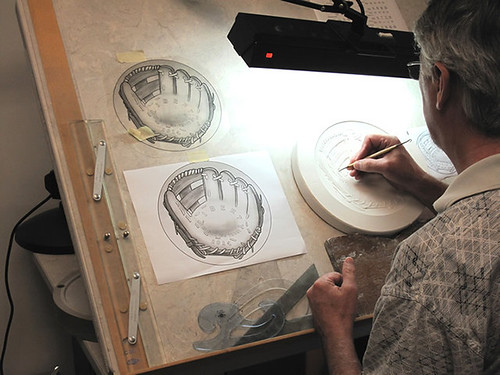
Don Everhart working on the Baseball Hall of Fame commemorative coin obverse design. Image: United States Mint
Next, I finished the reverse sculpt and was quite proud of it until it was relayed to me that I had the seams on the baseball backwards! I had so many variations of the reverse design in my files that when it came to the sculpting part, I chose the wrong design. This is something that the layman probably would not notice but it didn't escape the Hall of Fame stakeholders. I frantically went back to work and within a day I had the baseball seams true to form.
I am quite proud of the part I played in bringing this coin to fruition. However, it was a group effort that involved many people working within strict parameters on a tight deadline on a curved coin configuration that we hadn't done before. Congratulations to all who worked on it.
To read the complete original article, see:
Don Everhart: My Career in Coins, Part 2 – The United States Mint
(https://coinweek.com/editors-choice/don-everhart-career-in-coins-part-2-the-united-states-mint/)
To read the earlier E-Sylum article, see:
Don Everhart's Career in Coins, Part 4
(https://www.coinbooks.org/v25/esylum_v25n08a17.html)
RYDER MOVES FROM U.S. MINT TO GOVMINT.COM
Former U.S. Mint Director David Ryder has switched sides, moving from the government to commercial world of reselling and promoting Mint products. -Editor
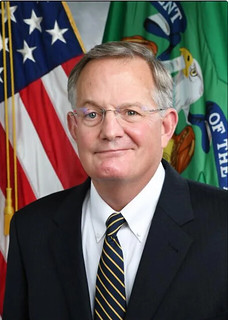 Asset Marketing Services, LLC (AMS), one of the largest direct-to-consumer retailers of collectible coins, announces that David J. Ryder, the former Director of the United States Mint, will advise the company on an exclusive basis.
Asset Marketing Services, LLC (AMS), one of the largest direct-to-consumer retailers of collectible coins, announces that David J. Ryder, the former Director of the United States Mint, will advise the company on an exclusive basis.
Ryder served as the 34th director of the Mint from 1992 to 1993 under President George H.W. Bush and returned to the Mint as its 39th director from 2017 to 2021 under President Donald J. Trump. Ryder is the only two-time director of the Mint in over a century, and in 2021, he was named one of Coin World's Most Influential People in Numismatics (1960-2020).
In his new role as a trusted advisor to AMS, Ryder will provide insight to the company on the development of new products and new international markets. Ryder's goal is to expand numismatic products globally through the company's U.S. businesses, GovMint.com and ModernCoinMart, and its Asia business, LPM Group Limited. AMS markets to consumers via its websites GovMint.com, ModernCoinMart.com and LPM.hk.
Ryder's global experience in numismatics, coupled with AMS CEO Bill Gale's 39-year career in the industry, creates a unique opportunity for the company to continue its mission to be an industry leader and to create outstanding products for collectors. Gale is a nationally recognized numismatist who has an unrivaled ability to capture the fascinating stories behind collectible coins.
"We are thrilled to have Dave working with us to bring exciting new products to life and to bring those products to collectors around the world," said Gale, CEO of AMS. "His creativity in developing commemorative coins and his experience in taking them to market is unmatched in our industry, and it will keep AMS at the forefront of the field."
While with the United States Mint, Ryder was responsible for the development of the 2019 Apollo 11 Commemorative Coin Program and the 2020 Basketball Hall of Fame Commemorative Coin Program, which included two colorized coins— a first for the Mint.
Ryder also was instrumental in the redesign of the 2021 American Gold and Silver Eagles for the program's 35th anniversary and guided the issuance of silver dollars commemorating the 200th anniversary of the construction of the White House. The U.S. Mint also produced its first quarters with a privy mark under Ryder's leadership.
To read the complete article, see:
Former Director of the United States Mint to Act as Ambassador and Strategic Advisor for Asset Marketing Services
(https://finance.yahoo.com/news/former-director-united-states-mint-160000673.html)
STEPHEN ALBUM INTERNET AUCTION 14
Here's the press release for the Stephen Album Rare Coins March 2022 Internet Auction 14. -Editor
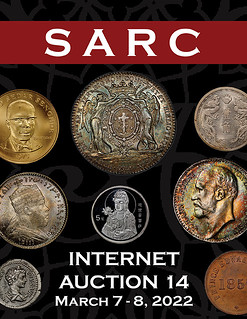 Stephen Album Rare Coins (SARC) will hold its Internet Auction 14 at its offices in Santa Rosa, California
across two days from March 7 to 8, 2022. Internet pre-bidding has begun and can be accessed through
their website. The Auction is made up of an even 2,000 lots of coins from all categories. (Ancient,
Islamic, India, China, World Coins A to Z). There are high expectations for the sale coming on the heels of
the firm's premier Auction 42 which broke many sales records and saw a sell-through rate of over 98%.
Stephen Album Rare Coins (SARC) will hold its Internet Auction 14 at its offices in Santa Rosa, California
across two days from March 7 to 8, 2022. Internet pre-bidding has begun and can be accessed through
their website. The Auction is made up of an even 2,000 lots of coins from all categories. (Ancient,
Islamic, India, China, World Coins A to Z). There are high expectations for the sale coming on the heels of
the firm's premier Auction 42 which broke many sales records and saw a sell-through rate of over 98%.
There are many affordable coins in the sale, and a few notable sections include:
- Over 1,000 World Coin lots, including 400+ choice coins from The Joe Sedillot Collection
- Over 290 Islamic lots, including many from Chingiz Khan and his successors
- Over 240 Indian lots, including 100+ Ancient Indian lots
- Over 230 Chinese lots, including 100+ Chinese chopmark lots
- Over 100 Ancient lots, including many choice Roman coins
Estimates range from $30 to $800. Sample lots from the sale follow:
Lot 45 ROMAN EMPIRE: Hadrian, 117-138 AD, AR denarius (3.19g), Rome, 118 AD, RIC-114, laureate bust right, IMP CAESAR TRAIAN HADRIANVS AVG // Fortuna seated left, holding rudder and cornucopia, P M TR P C OS II, FORT RED in exergue, bold VF
$160 to $180 USD Estimate
Lot 304 GOLDEN HORDE: Toda Mangu, 1280-1287, AR dirham (1.67g), Qrim, AH683, A-2021.1, tamgha in central circle, a superb mint state example! NGC graded MS65
$300 to $400 USD Estimate
Lot 593 KUTCH: Pragmalji II, 1860-1875, AV 25 kori, Bhuj, 1863/VS1920, Y-17, citing Queen Victoria, a lustrous mint state example! NGC graded MS61
$350 to $450 USD Estimate
Lot 981 BOLIVIA: Carlos III, 1759-1788, AR 8 reales, 1768, KM-50, assayer JR, small cut with a few other obverse marks, variety with 6-petalled rosette below shield, EF, ex Joe Sedillot Collection
$150 to $200 USD Estimate
Lot 1062 PRINCE EDWARD ISLAND: AE 1/2 penny token, 1857, Charlton-PE-7C1, Breton-919, Self Government and Free Trade type, large clover - large AND variety, medallic die axis strike, PCGS graded MS63 BN
$200 to $300 USD Estimate
The firm is now taking consignments for future internet and premier sales. More information can be found on their website at www.stevealbum.com
DAVISSONS AUCTION 41 GREEK, JUDAIC SELECTIONS
In an email to clients this week, Lief Davisson outlined several nice items in the upcoming Davissons Auction 41. Some choice coins here! -Editor
As we inch towards spring here in Minnesota, winter has chosen to strike back. High winds, heavy snow, and delays by the printing company came together these last few weeks to hold up our print catalog, but it is now on its way! If you are already on our list look for it today or early next week (for our international recipients it will be a little longer). In the meantime take a look below at a few notable pieces from the Greek and Judaic sections of our March 16th sale.
The Greek section is composed entirely of those pieces that caught our eye over the course of the last year. Drawn from consignments large and small, several old collections, and our own holdings, this diverse offering opens with several notable Sicilian bronzes, some attractive Alexander tetradrachms from rare mints, a few rare Bithynian issues, and a beautiful group of Cilician staters, to name a few.
Within the Greek section are two small collections of note, the first being our initial offering from a collection of Seleukid coinage. "The Seleukid Empire was the largest of the successor states carved from the short-lived empire of Alexander the Great, and arguably the most culturally diverse. Over nearly two and a half centuries it produced an astonishing volume and variety of coinage...from mints scattered across its vast expanse. (Seleucid Coins: A Comprehensive Catalogue, Volume I, by Arthur Houghton and Catharine Lorber with Brian Kritt.) We begin with tetradrachms from several different mints of Seleukos I, who founded the Seleukid dynasty which ruled until Pompey made Syria a Roman province in 63 B.C. He was succeeded by his son Antiochos I Soter, who was followed by Antiochos II Theos, and so on. We offer examples both in the types of Alexander, and with their portraits. Sprinkled throughout are a number of interesting bronzes.
The second small collection of note is composed of high quality coins of Judaea. This group of eleven Biblical era coins represents the Hasmoneans, Herodians, and Roman Procurators of Judea concluding with the First and Second Revolts. David Sear once commented about this series as the miserable coins of this type…identified with the widow's mite,
a description of their usual condition. They were casually produced as small change with minimal attention to quality. This group is exceptional and was carefully assembled by a collector over a period of years who sought the finest examples possible. The provenance for each piece is the same, ex Brian Kritt, and each coin comes with the envelope he provided with the coin, with his attributions, including handwritten inscriptions.
There is more to see – an artistic early siglos from Lydia under Kroisos, a shekel of Tyre from the year of Christ's crucifixion, a beautiful Athenian owl – why not take a look! At just 89 lots we've been careful about each piece chosen.
For more information, see:
https://davcoin.com/
FRANK ROBINSON ANCIENT COIN AUCTION 118
Here's the announcement for Frank Robinson's 118th sale, closing April 5, 2022. -Editor
Dealer Frank S. Robinson will conduct his 118th mail and internet auction of Ancient and Early Coins with a closing date of April 5. The sale will include 552 lots, low minimum bids, and bids to be reduced as competition permits. Robinson notes that reductions have averaged 15-20% in his recent sales. There is no buyer fee.
Highlights include several very Choice classic Athenian owl
tetradrachms; a rare Elymais Tetradrachm with conjoined portraits of Kamnaskires III and Queen Anzaze; a nice VF Ephesos Bee Tetradrachm; a Choice VF+ archaic Kaulonia stater; a very rare Knidos Tridrachm with Hercules wrestling snakes; and a rare Parthian Tetradrachm of Mithradates I, Sellwood 13.2 in VF.
Among Roman coins there is an Agrippina Senior carpentum Sestertius in EF with some smoothing but a superb portrait; a Choice EF/VF Nero denarius; a Choice EF Denarius of Titus; and an AEF Allectus Quinarius.
This sale will also feature offerings from Robinson's personal collections of early Spanish and English coins, and a selection of early Chinese coins, mostly in group lots.
The auction further includes Byzantine and other early coinages, other group lots, literature, and a section of items offered at fixed prices
Robinson holds about three auctions annually, and tries to offer a broad range of material for advanced collectors as well as bargain hunters. Catalogs are free; contact Robinson at Box 8600A, Albany, NY 12208; phone/fax 518-482-2639; e-mail frank@fsrcoin.com. The full catalog is at his website, www.fsrcoin.com.
Frank has some fun with his cataloging. Here's Lot 67. -Editor
67 PARTHIA, Phraates IV, Drachm, Sell. 53.7, Mithradatkart; VF-EF, nrly centered on egg-shaped flan, minor crudeness, good for this.
N O T E : on this lot, you can bid on either the actual coin, or on a crypto NFT (Non-Fungible Token) version. For those in the Stone Age, an NFT is a digital coding of the thing, not a physical object, a data package stored on a blockchain, signifying one's ownership. Again, not an actual coin. NFTs are typically of artsy things. Coin NFTs are very rare! (A GVF brought $253, Triton 1/10.
An NFT of a similar coin sold for $412,000 in a Sotheby's auction.) Starting Bid $45 (for the coin. For the NFT, $160,000.)
NUMISMATIC NUGGETS: FEBRUARY 27, 2022
Here's a selection of interesting or unusual items I came across in the marketplace this week. Tell us what you think of some of these. -Editor
Kingdom of Macedon, Philip III Arrhidaios Stater
Kingdom of Macedon, Philip III Arrhidaios (323-317 BC) AV Stater, mint of Kolophon, c. 322-319 BC, 8.58g. Laureate head of Apollo, with the facial features of Alexander the Great, facing right. Rev. FI?I??OY,, charioteer, holding reins and kentron, driving Biga right, tripod below horses. (Le Rider, pl. 90, 16; Thompson 12; Jameson 798). Good Extremely fine. Lustrous. A superb piece of fine style, and a marvel of Hellenistic die engraving. Ex. Spink, original ticket included.
Gold staters of this type were originally struck during the reign of Philip II of Macedon (359-336 BC). Featuring a portrait of Apollo on the obverse and a biga of horses on the reverse, they were a symbol of the king's power and success. The trusted type continued to be struck during the reign of Alexander the Great, in the name of his deceased father, and many more were issued into Philip III's reign. This coin, however, stands out from the rest. The dies used to strike this particular gold stater have been engraved with exceptional skill, resulting in a familiar-looking portrait.
Beautiful ancient gold from the upcoming Baldwin's auction. -Editor
To read the complete lot description, see:
Kingdom of Macedon, Philip III Arrhidaios (323-317 BC) AV Stater
1799 Gold Eagle
1799 $10 Large Obverse Stars, BD-10, R.3, AU55 PCGS. Bass-Dannreuther Die State a/a, perfect dies, as usual. BD-10 is the more plentiful of the two Large Stars 1799 eagle varieties, with an estimated 300 to 400 pieces known in all grades. This survivorship makes it also one of the most plentiful early eagle varieties on any date, an important attribute for type collection considerations. This Choice AU example displays bright yellow-gold surfaces with remnants of luster in the protected regions. The strike is sharp, and only a touch of high point wear is seen. Scattered light marks in the fields accompany the grade. From The Gold Coast Collection.
Nice coin. From the Heritage March 21, 2022 sale. -Editor
To read the complete lot description, see:
1799 $10 Large Obverse Stars, BD-10, R.3, AU55 PCGS. Bass-Dannreuther Die State a/a, perfect dies, as usual. BD-10 is...
(https://coins.ha.com/itm/early-eagles/1799-10-large-obverse-stars-bd-10-r3-au55-pcgs-bass-dannreuther-die-state-a-a-perfect-dies-as-usual-bd-10-is/a/60253-92680.s)
Bechtler 5 Dollar Gold
Lot 658. U.S.A. Georgia gold. 5 Dollars Christopher Bechtler at Rutherford County (8,23 g.). Ref : Fr 9. Rare et presque Superbe.
Howard Daniel pointed out this nice Bechtler gold piece in the Gadoury Spring 2022 auction. Thanks. -Editor
To read the complete lot description, see:
Bechtler 5 Dollar Gold
(https://www.sixbid.com/en/editions-v-gadoury/9287/usa/7883078/u-s-a-georgia-gold-5-dollars)
Pelletier Electricity Medal
FRANCE - Art Deco Naked Woman with thunderbolt medal by Ray PELLETIER, 68 mm
Great medal from a seller in Finland. -Editor
To read the complete lot description, see:
FRANCE - Art Deco Naked Woman with thunderbolt medal by Ray PELLETIER, 68 mm
(https://www.ebay.com/itm/125043016967)
1968-S Cent Bonded With a Costa Rica 5 Centimos Blank
1968-S 1C Lincoln Cent -- Bonded With a Costa Rica 5 Centimos Blank -- MS63 Red PCGS. The San Francisco Mint struck 1967-dated five centimos for Costa Rica. The 1967 mintage was 6,020,000 pieces, and the 1968 mintage was 4,840,000 pieces. The stainless steel coins had a diameter of 14.92 mm. San Francisco also struck Lincoln cents during 1968, with the S mintmark appearing for the first time on the denomination since 1955. A five centimos blank and a Lincoln cent planchet were fed together between 1968-S cent dies. The five centimos blank was fed on top of the cent planchet, relative to the obverse die, with the edges of the two flans aligned at 7:30. The five centimos blank indented the cent planchet during the strike. The right-side borders show incompleteness of strike, since the force of the strike was focused on the five centimos blank. Lincoln's shoulder, cheekbone, and forehead also show blending of impression. The bronze portion of the coin is Red save for a trio of moderate reverse spots. Lincoln's shoulder and the left obverse field display unobtrusive contact.
Wow - a fantabulous error from the Fred Weinberg collection. Offered in the May 2022 Heritage Central States sale. -Editor
To read the complete lot description, see:
1968-S 1C Lincoln Cent -- Bonded With a Costa Rica 5 Centi...
(https://coins.ha.com/itm/lincoln-cents/small-cents/coming-soon-pcgs-2909-/p/1344-14004.s)
THE QUINARIUS
In his most recent CoinWeek Ancient Coin Series article, Mike Markowitz discusses the obscure ancient Roman coin denomination quinarius. Here's an excerpt - see the complete article online. -Editor
ANCIENT ROME ISSUED coins for almost eight centuries. Among the bewildering variety of denominations that circulated during this long span of time, the quinarius stands out as one of the most obscure. Struck in both gold and silver, the type is so scarce that many experienced collectors have never even seen one. No book-length study of the quinarius appeared in English until 2007!
The origin of the silver quinarius is closely linked to Rome's urgent need to pay troops with high-quality silver money in the Second Punic War (218-201 BCE), which also gave rise to its big brother, the denarius, and its diminutive, short-lived companion, the silver sestertius.
The superb collection of the American Numismatic Society in New York contains 355 silver quinarii, but just 11 examples in gold. Many of these coins came from the bequest of Edward T. Newell (1886-1941). Another large group came from the collection of Charles Hersh (1923-1999) a banker, and numismatic scholar.
The First Quinarii
When it was introduced around 212 BCE, the silver denarius was valued at 10 bronze asses. The coin's obverse was prominently marked with a Roman numeral X, meaning 10
. The quinarius, weighing a bit over two grams, was valued at five asses and marked with the numeral V. Weighing under a gram, the tiny silver sestertius, whose name means two and a half
, was marked IIS. The S
in this case stood for semis, meaning one-half. Around 23 BCE, the silver sestertius was replaced by a large bronze coin. Ancient mints were often reluctant to produce small denominations in precious metal because it was more work for less profit.
To read the complete article, see:
The Quinarius: An Ancient Roman Coin You've Never Heard of
(https://coinweek.com/ancient-coins/the-quinarius-an-ancient-roman-coin-youve-never-heard-of/)
HENRY III SHORTCROSS PENNY FOUND
Large hoards get all the headlines, but metal detecting finds come in onesies and twosies, too. -Editor
Matthew Hepworth unearthed a Henry III Shortcross penny, estimated to have been minted between 1222-1236 in Canterbury by a Moneyer named Simon, in the Carnforth area.
"It's only my second every discovery of this type, and strangely, it doesn't come under treasure as it was a single coin," he said.
"It was near the gateway so I've walked over it many times. It's so strange how you can miss these targets.
"First and foremost, you need the landowners' permission to detect on their land. I always keep him informed so I've built up a collection for him so it's joint ownership between myself and the landowner."
"I've been detecting for 30 years now. I'm member of the Lune Valley Detecting Club and we've had a good year last year for finds," he said.
"I usually go out detecting with David and we found another section of the Viking silver that was first discovered in 1997, which is in the Lancaster Museum.
"We've found the rest of it, and it's currently being processed through the usual official channels - it'll become public soon. "Another one of our best finds was a horde of 28 Roman silver coins but that wasn't in our area, that was in the Midlands.
To read the complete article, see:
Lune Valley detectorist finds 800-year-old coin
(https://www.thewestmorlandgazette.co.uk/news/19941175.carnforth-detectorist-finds-800-year-old-coin/)
SILVER COIN STASH FOUND IN CZECH REPUBLIC
The pandemic has been good for coin finds, as more people are getting out into nature. In the Czech Republic, a mother and son team stumbled across a pot of silver coins. -Editor
A mother and her 13-year-old son discovered a trove of historical silver coins when they were out walking in the woods in Moravia, the eastern half of the Czech Republic.
They were walking near Loucka, a small village in the Zlín region, when they came across a broken clay pot that contained 818 silver coins. Once coins are analyzed, they will be put on public display by the Wallachian Regional Museum.
Archaeologist Samuel Španihel took possession of the treasure. "The find contained fragments of a clay vessel of unknown origin and a set of slightly to heavily corroded silver coins numbering 818 pieces, most of which were stuck together into several differently sized conglomerates. I also performed a search on the spot, during which I discovered only individual coins," Španihel said.
Very generally, it is possible to date the hoard to the 17th and the beginning of the 18th century. The color of the shards and the composition of the container material then indicate that it does not come from our area, but probably from some mining region,
he added.
Perhaps in part because the pandemic saw people going out into nature areas more often, 2021 was the most successful in terms of archaeological finds in Wallachia's history. The highlight last year was at the village of Ústí u Vsetína, where a group of friends found a container full of Prague groschen from the second half of the 14th century. This year is now off to a good start as well.
Detailed examination of 818 coins from Loucka won't start for several months. Experts will begin only after the analysis of last year's find in Ústí u Vsetína is completed.
To read the complete article, see:
Mother and son find silver coin trove while hiking in Moravia
(https://www.expats.cz/czech-news/article/mother-and-son-find-silver-coin-trove-while-hiking-in-moravia)
FRIENDSHIP RINGS
The December 2021 issue of the Love Token Society's Love Letter newsletter has a nice article by editor Carol Bastable on Friendship Rings. With permission, here's an excerpt. Thanks! -Editor
 In a past issue of the Love Letter there was an article on love token
rings. Pictured to the right is an ad from an 1892 wholesale catalog
from said article. Besides being identified as coin silver rings, they
were also termed as Friendship Rings. Below the ad are some
pictures of actual Friendship Rings. Generally the bands are made
from the outer perimeters of coins. The coin centers are cut out and
made into charms, also known as bangles. On occasion the ring band
is made from wire rather than the reeded edge of a coin.
In a past issue of the Love Letter there was an article on love token
rings. Pictured to the right is an ad from an 1892 wholesale catalog
from said article. Besides being identified as coin silver rings, they
were also termed as Friendship Rings. Below the ad are some
pictures of actual Friendship Rings. Generally the bands are made
from the outer perimeters of coins. The coin centers are cut out and
made into charms, also known as bangles. On occasion the ring band
is made from wire rather than the reeded edge of a coin.
Until now it was a mystery how these rings got their name.
An 1891 Ladies' Home Journal (premium catalog) tells the
origins of Friendship
coin rings. The story is as follows:
Apparently, the latest fad
in connection with rings requires
a young lady to request of gentlemen friends a subscription
of a cent apiece. With funds so obtained a ten-cent silver-
piece is formed into a ring with a bangle, on which is
engraved initials or a date. We think our plan of sending
Subscribers is to be preferred. The passage continues, We
have the rings all ready made up, and they are thicker than
most of those made of coin. Order only by size. (See our
Ring Scale.) Price, 40 cents each, postpaid.
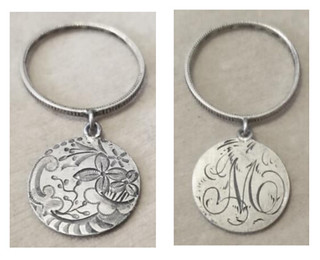 The Ladies Home Journal offered rewards or premiums for
women who sold subscriptions of the magazine. The
The Ladies Home Journal offered rewards or premiums for
women who sold subscriptions of the magazine. The
Friendship
ring was available in 1891 for selling three 3-
month subscriptions at 25 cents each. There was also a price
of 40 cents each, post-paid if a person wanted to buy the ring directly. While the ring from the Ladies Home Journal is not made from a coin, they have supplied us with the story behind these rings.
Over the years I have seen a variety of these rings and have questioned whether the bangle was made from a coin in instances where both sides were engraved. With silver bands that have a reeded edge and a dental
design inside the rim, it would follow that the bangle would come from the same coin.
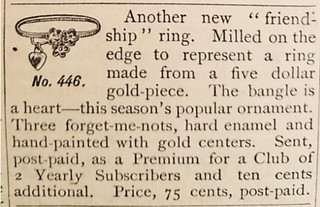 [At right] are gold
[At right] are gold Friendship
rings from
the 1891 premium catalog. The bottom
one has a milled edge and is said to
imitate a $5.00 gold coin. Obviously it is
less costly to use 10k or 14k than to cut up
a $5 coin. This ad indicates that at times a
milled coin edge was manufactured.
Without these period references there is
much we would not know. They convey
the history, pricing and a time frame from
1891-1893. These confirm that love token
information is out there just waiting to be
discovered.
For more information on the Love Token Society, see:
http://lovetokensociety.com/
https://www.facebook.com/groups/149160525251231/
GOLD MORGAN COMITIA AMERICANA SURFACES
Good things come to those who wait. The numismatic world has been waiting for generations to learn if the Morgan Comitia Americana medal in gold would would ever come to light. It finally has. Here's a report from the Stack's Bowers blog. -Editor
Did you know that the one-of-a-kind Daniel Morgan gold medal from the Comitia Americana series has finally surfaced? To begin, let's recap the creation of the medal and what led to its century and a half disappearance.?
The Daniel Morgan Comitia Americana medal was awarded following the Battle of Cowpens in South Carolina. General Daniel Morgan was an integral piece of Washington's forces. After Morgan's time at Valley Forge, he was forced to return to his farm in Virginia due to disabilities incurred while on duty. However, when the British forces took over Charleston and Camden (both in South Carolina), Morgan felt the need to join with General Gates to protect the foot of the Appalachian Mountains. The British were led by Cornwallis and Tarleton. Significantly outnumbering the American forces, Tarleton confronted General Morgan at Cowpens. But, Morgan proved more tactical than Tarleton and eventually took 700 British soldiers, along with the colors of the 7th Royal Fusiliers.
Augustin Dupre engraved the Daniel Morgan Cowpens medal to depict the battle scene on the front and a Native American female placing a crown on Morgan on the back. There are multiple silver and bronze examples known, as well as a single gold medal that was presented to Morgan in March 1790. The gold medal was passed down to Morgan's grandson, Major Morgan Neville, who stored it in a bank in Pittsburgh from which it was stolen in 1818. By an Act of Congress in 1836 it was agreed that a replacement would be made for the stolen gold piece, using copy dies created in France from a silver example. By the time the new gold medal was complete, Neville had passed away, and it was given to his son, Morgan L. Neville in 1841.
John Kraljevich, in his cataloging for Stack's Bowers Galleries 2019 presentation of the John W. Adams Collection of Comitia Americana and Related Medals reported that the last public appearance of the medal was when Morgan Neville's grandson displayed it in a Saratoga, New York jewelry store window in 1885. Experts and historians have sought the medal ever since. Finally, in 2022, Stack's Bowers Galleries will sell the 1839 gold Daniel Morgan Cowpens Medal at public auction. This will represent a monumental opportunity for Comitia Americana collectors to own an elusive piece of history. We have had the medal certified by PCGS and it received a grade of Specimen-63. Over the past 182 years, the medal was well preserved and safely stored. Stack's Bowers Galleries is proud to finally present the long lost treasure and we are certain that our collectors will be thrilled to have the chance to own such an incredible piece.
To read the complete article, see:
The Long Lost Daniel Morgan Gold Medal
(https://www.stacksbowers.com/News/Pages/Blogs.aspx?ArticleID=daniel-morgan-comitia-americana-gold-medal)
ELECTRONICS SNIFFER DOG AWARDED DICKIN MEDAL
The latest recipient of the Dickin medal for animal bravery is a German shorthaired pointer named Hertz. -Editor
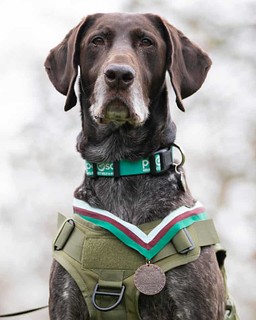 A retired military working dog named Hertz has been awarded a medal known as the animals' Victoria Cross for his service in Afghanistan.
A retired military working dog named Hertz has been awarded a medal known as the animals' Victoria Cross for his service in Afghanistan.
The German shorthaired pointer is the first dog in British military history to detect electronic communications equipment such as mobile phones, voice recorders, sim cards and GPS devices.
Hertz, who serviced with the Royal Air Force police, has been awarded the PDSA Dickin medal, the 74th recipient of the honour since it was first awarded in 1943.
Throughout his time in Afghanistan, Hertz was responsible for finding more than 100 items of contraband, including drugs and personal electronic devices (PEDs), described as a significant threat to the lives of service personnel and civilians.
After weeks of intense specialist training, assisted by the Prison Service, which uses sniffer dogs to detect electronics contraband, Hertz and his handler, WO Jonathan Tanner, were deployed to Afghanistan.
Tanner and Hertz worked together daily in military and civilian compounds in the then British military base Camp Bastion. On his first search, Hertz discovered drugs and electronic devices, with the latter successful in supporting intelligence purposes.
Hertz was deployed throughout Helmand province and to the Afghan capital of Kabul. During the 13 months of his tour, there was not a single rocket attack on Camp Bastion.
The PDSA said: His work was vital to ensure the safety of all the personnel working there, both locals and military. It is difficult to truly estimate how many lives he saved through his actions.
The first recipient of the Dickin medal was a pigeon, White Vision. She delivered a message that led to the rescue of a ditched aircrew in October 1943, flying nine hours in bad visibility and heavy weather with strong headwinds.
To read the complete articles, see:
Dog awarded animals' Victoria Cross for RAF service in Afghanistan
(https://www.theguardian.com/uk-news/2022/feb/22/dog-awarded-animals-victoria-cross-for-raf-service-in-afghanistan)
Hero RAF sniffer dog is awarded the animal version of the Victoria Cross for saving the lives of British troops in Afghanistan by protecting Camp Bastion and detecting electronic devices that put soldiers in danger
(https://www.dailymail.co.uk/news/article-10538737/Hero-RAF-sniffer-dog-awarded-highest-honour-saving-British-troops-Afghanistan.html)
2022 ANIMALS IN WAR AND PEACE MEDALS
Six four-legged heroes are set to be honored here in the U.S. Here's the press release for the upcoming Animals in War and Peace Medal Ceremony at the U.S. Capitol. -Editor
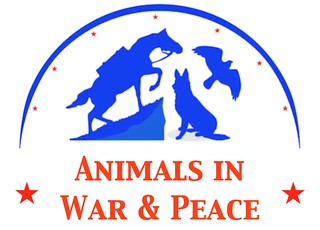 The United States House of Representatives recognized
the roles and contributions of our country's service animals in a House of Representative
resolution introduced on Friday, February 18, 2022, in Washington, DC. The resolution
acknowledges the importance of our animals and their valiant human handlers for bravery in war
and creating a new process for honoring our U.S. animals' valor and meritorious achievements.
The United States House of Representatives recognized
the roles and contributions of our country's service animals in a House of Representative
resolution introduced on Friday, February 18, 2022, in Washington, DC. The resolution
acknowledges the importance of our animals and their valiant human handlers for bravery in war
and creating a new process for honoring our U.S. animals' valor and meritorious achievements.
Representative Lucille Roybal-Allard (CA-40) introduced the resolution along with 11 bipartisan original cosponsors. The Congresswoman attended the 2019 Inaugural Animals in War and Peace Medal of Bravery Ceremony and recognized the need to honor our United States animals who have made significant contributions to the peace and protection of our country that were officially recognized by the Quartermaster Corps on March 13, 1942.
The Congressional Record link can be found at: https://www.congress.gov/bill/117th- congress/house-resolution/935/text?r=1&s=2
Since 1943, the United Kingdom has been the only country in the world to pay homage to
animals with its international PDSA Dickin Medal, also known as the Victoria Cross for
Animals
. The United States does not currently have an official medal to honor and recognize
animals that serve in war and peace for their acts of gallantry and bravery. There is increasing
support for the process of a Medal of Bravery and a Distinguished Service Medal for animals and
an annual medal ceremony to recognize such animals who have served valiantly since World
War I.
There are presently 3,000 military working dogs in the United States and increasing demand for the military working dogs each year as a result of proven worth and success. Since September 11, 2002, Air Force security forces have trained approximately 500 military working dogs for the Department of Defense. There are an estimated 2,300 military working dogs deployed worldwide safeguarding military bases.
The United States Police Canine Association estimated that there are approximately 15,000 police canines working today. Additionally, there are over 2,000 certified search and rescue teams across the United States.
I am humbled to introduce this resolution which recognizes those animals who have nobly and
courageously served this country at home and around the world as military and police working
animals and search and rescue canines,
said Congresswoman Roybal-Allard. These animals
and their handlers are true American heroes, and their sacrifices deserve to be recognized and
honored.
Members of Congress who joined Representative Roybal-Allard as original co-sponsors on this first bi-partisan House resolution include: Representatives Brian Fitzpatrick (PA), Julia Brownley (CA), Chris Pappas (NH), Charlie Crist (FL), Jamie Raskin (MD), Sanford Bishop (GA), Ted Lieu (CA), Gus Bilirakis (FL), Elaine Luria (VA), Dina Titus (NV), and Mike Quigley (IL).
Robin Hutton, President of Angels Without Wings, Inc., stated "As the champion for the Animals in War and Peace resolution, we salute Representative Roybal-Allard and her insight into the importance of recognizing our American animal heroes. Additionally, the Animals in War and Peace Board deeply appreciates the eleven Representatives by adding their names as original cosponsors supporting a process for honoring our brave animals and handlers in the United States."
Six medals will be awarded on March 9, 2022 by Members of Congress to six distinguished animals at the Second Animals in War and Peace Ceremony on Capitol Hill. A media advisory will be issued shortly before the March ceremony announcing the next cohort of distinguished animal medalists.
I reached out to Angels Without Wings, Inc. President Robin Hutton for additional images and information. Thank you! The mainstream press rarely bothers publishing the basic numismatic facts sought by researchers and collectors.
Below left is an image of the Medal of Bravery; at right is the design for the new Distinguished Service Medal. -Editor
Robin writes:
"I don't have an actual picture of the Distinguished Service Medal medal as it is new and they have just shipped for our ceremony!
"The same jeweler that makes the Dickin Medal, Cleave & Company, in London, England, designed and produces our medal and ribbon. They are also the Monarch's jeweler, and they were responsible for the insignia display at Prince Philip's funeral. They really wanted to create our medal, and they did a magnificent job."
For more information, see:
https://animalsinwarandpeace.org/
HISTORY OF UKRAINIAN CURRENCY
David Pickup passed along this page on the history of Ukrainian currency from the National Bank of Ukraine. Here's an excerpt - see the complete article online if the site stays up. -Editor
The history of the Ukrainian national currency
The hryvnia is Ukraine's official national currency. The name is derived from the word hryvnia,
which in Kyiv Rus times meant a decoration worn at the nape of the neck. As early as the 8th and 9th centuries, the hryvnia was used as a unit of weight and counting when trading and paying tributes. Later, in various historical periods, the word hryvnia
acquired different meanings more than once.
Coin production in the 10th to 12th centuries
The first Ukrainian money, zlatnyks (gold coins) and sriblianyks (silver coins) were produced under Kyiv Prince Volodymyr the Great. These coins are the oldest extant documents that have an image of the trident, a symbol used by Kyiv princes.
The obverse of zlatnyks features the prince on a throne, a trident and the legend ???????? ?? ?????
(Volodymyr on a throne). The reverse depicts the face of Jesus and the legend ? ?? ??? ?????
(and this is his gold).
While the earliest coins produced by Western European countries copied Roman coins, including the portraits and legends placed on these coins, zlatnyks and sriblianyks only featured legends in the Old East Slavic language and bore images of Old Rus princes.
Svyatopolk I of Kyiv (Svyatopolk the Accursed), Yaroslav the Wise and Oleg I of Chernihiv (Prince of Tmutarakan) also produced silver coins.
The Ukrainian Revolution of 1917 to 1921
During Ukraine's struggle for independence from 1917 to 1921, the introduction of a national currency and the establishment of an independent banking system were of great importance in creating a sovereign Ukrainian state.
On 22 December 1917, the Central Council adopted a law declaring the Russian State Bank's Kyiv branch Ukraine's state bank. Mykhailo Kryvetskyi was appointed the first director of the bank. It was Kryvetskyi who signed the first banknote issued by the independent Ukrainian state – the 100 karbovanets banknote, which was put into circulation on 5 January 1918. One karbovanets was equivalent to 17.424 measures of pure gold, with one measure equaling 0.044 g of gold.
While designing the 100 karbovanets banknote, artist Heorhiy Narbut incorporated the trident into its design as the symbol that was found on the oldest Ukrainian coins – the zlatnyks and sriblianyks made by Volodymyr the Great.
On 1 March 1918, the Central Council passed a law that introduced a new unit of money, the hryvnia, which consisted of 100 shahs and equaled 1/2 of a karbovanets.
To read the complete article, see:
History of hryvnia
(https://bank.gov.ua/en/uah/uah-history/)
LOOSE CHANGE: FEBRUARY 27, 2022
Here are some additional items in the media this week that may be of interest. -Editor
Here's a new book from CDN Publishing, LLC. It's in softcover format, but "is sold as an annual subscription. If you order the printed copy, you will receive the current soft-cover edition and online viewer access for 12 months after you purchase it." -Editor
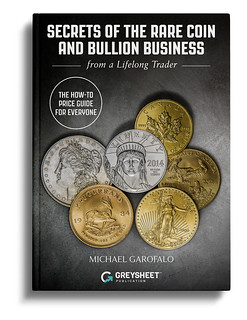 "Secrets of the Rare Coin and Bullion Business from a Longtime Trader" by Michael Garofalo is one of those rare books that actually teaches you about how the industry works behind the curtain. Garofalo covers the industry from the insider's perspective and devotes chapters to everything from retail marketplaces like eBay, to pricing sources, trade publications, grading services, major retailers, and even CAC.
"Secrets of the Rare Coin and Bullion Business from a Longtime Trader" by Michael Garofalo is one of those rare books that actually teaches you about how the industry works behind the curtain. Garofalo covers the industry from the insider's perspective and devotes chapters to everything from retail marketplaces like eBay, to pricing sources, trade publications, grading services, major retailers, and even CAC.
To read the complete article, see:
SUBSCRIBE TO
Secrets of the Rare Coin & Bullion Business
(https://www.greysheet.com/publications/secrets-rare-coin-bullion-business-from-lifelong-trader-michael-garofalo)
Here's an article by Kyle Clifford Knapp on the PCGS site about Overstrikes, Multistrikes & Clashes. -Editor
Overstrikes are coins or tokens struck using an already struck example of a different issue as a planchet (then referred to as the undertype). This may occur inadvertently, but is most often intentional, with extant coins serving as a convenient and economic alternative to requisitioning a freshly manufactured batch of blanks. While an overstriking typically obliterates the majority of the undertype, this can frequently be identified via discernible remnants of the design in the fields, or on the edge. Such apparitions, such as the word ONE
below the date on the imaged 1795 Half Cent, do not generally detract from the grade of a piece, as they were present at the time of striking.
In contrast to overstrikes, multistrikes are pieces struck more than once from the same die pair. If the planchet rotates within the collar or flips over between impressions, visually spectacular errors can be created.
Die clashing is evidence of a permanent impression left on a die from its collision with another (usually mated) die without a coin in between to cushion the blow and absorb the design. In some series, such as the Three Cent Nickels from the middle of the 19th century, this is common, and such pieces command no premium. In other instances, they can be highly collectible. This 1857 Flying Eagle Cent obverse die was somehow clashed with the reverse die from a contemporary Liberty Seated Half Dollar, leaving dramatic evidence on the obverse: the projections from the eagle's beak, front wing, and tail are all clash marks and not at all detrimental to the grade.
To read the complete article, see:
From the PCGS Grading Room: Overstrikes, Multistrikes & Clashes
(https://www.pcgs.com/news/from-the-pcgs-grading-room)
The American Numismatic Society recently acquired one of Laban Heath's Improved Adjustable Compound Microscopes, promoted as a tool for examining bank notes. Here's ANS Librarian David Hill's Pocket Change article about it. -Editor
The ANS Library and Archives recently acquired an interesting little gadget—one of Laban Heath's Improved Adjustable Compound Microscopes. Patented by Heath in 1877, he sold it primarily as a tool for examining bank notes—enabling you beyond a doubt to form a correct judgement of the genuineness of the work.
Ideally, it would be used in conjunction with his Infallible Counterfeit Detector, just one of a number of similar print publications that proliferated in the nineteenth century, helping people determine the real value and authenticity of bank notes.
These publications—bank note reporters and counterfeit detectors—arose at a time when state and territorial banks, large and small, scrupulous and not, were permitted to issue their own bank notes, exchangeable for silver or gold. The resulting variety of notes made the counterfeiter's job much easier. And the actual value of the notes varied from place to place, regardless of the face value. In fact, a note might circulate from a bank that no longer existed. Bank note reporters and counterfeit detectors helped people make sense of it all.
To read the complete article, see:
LABAN HEATH'S IMPROVED ADJUSTABLE COMPOUND MICROSCOPE
(http://numismatics.org/pocketchange/microscope/)

